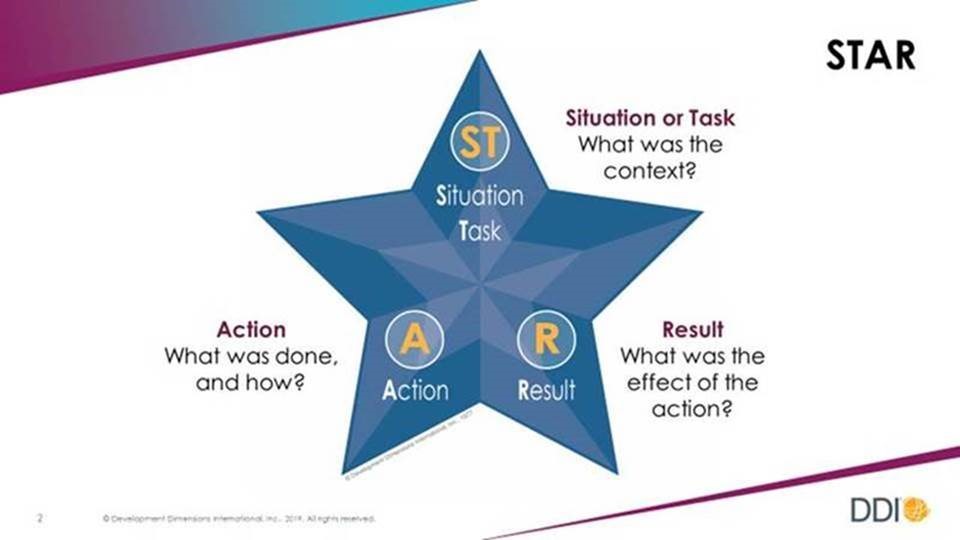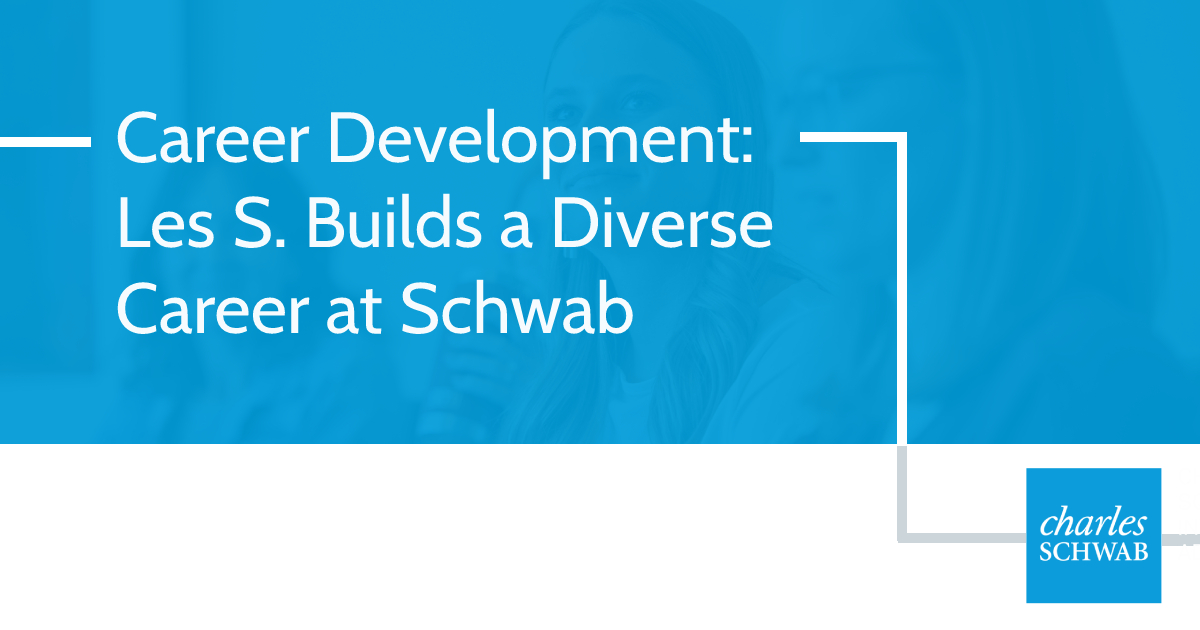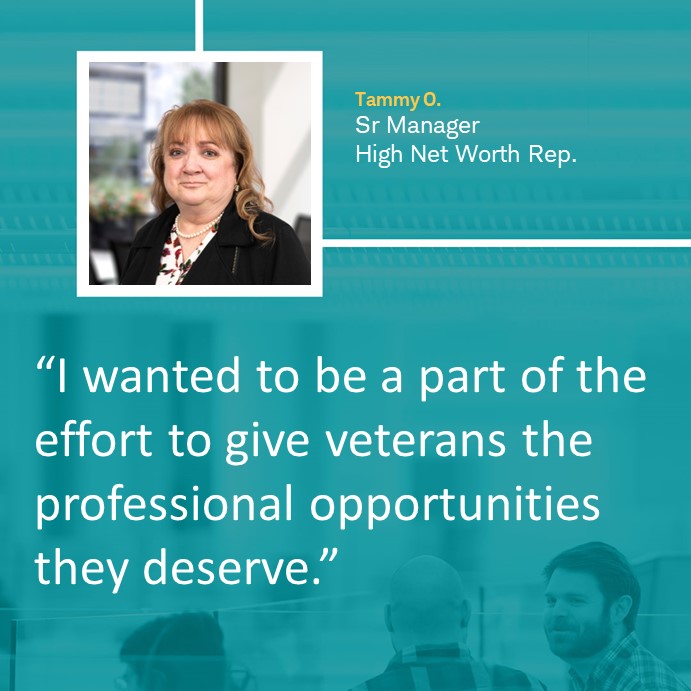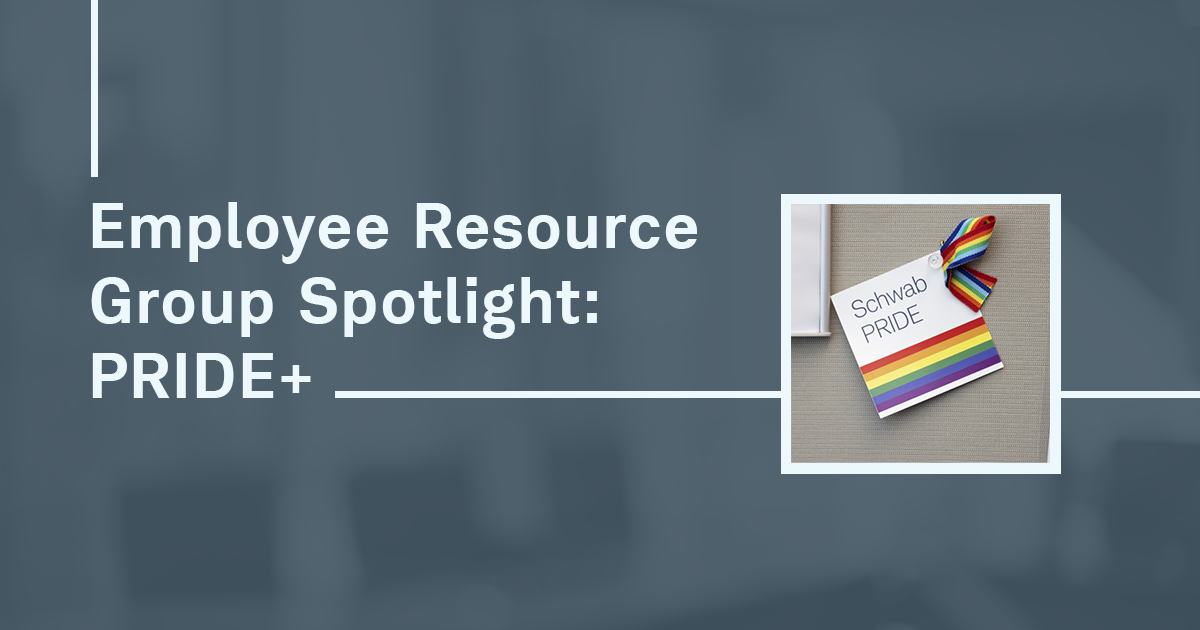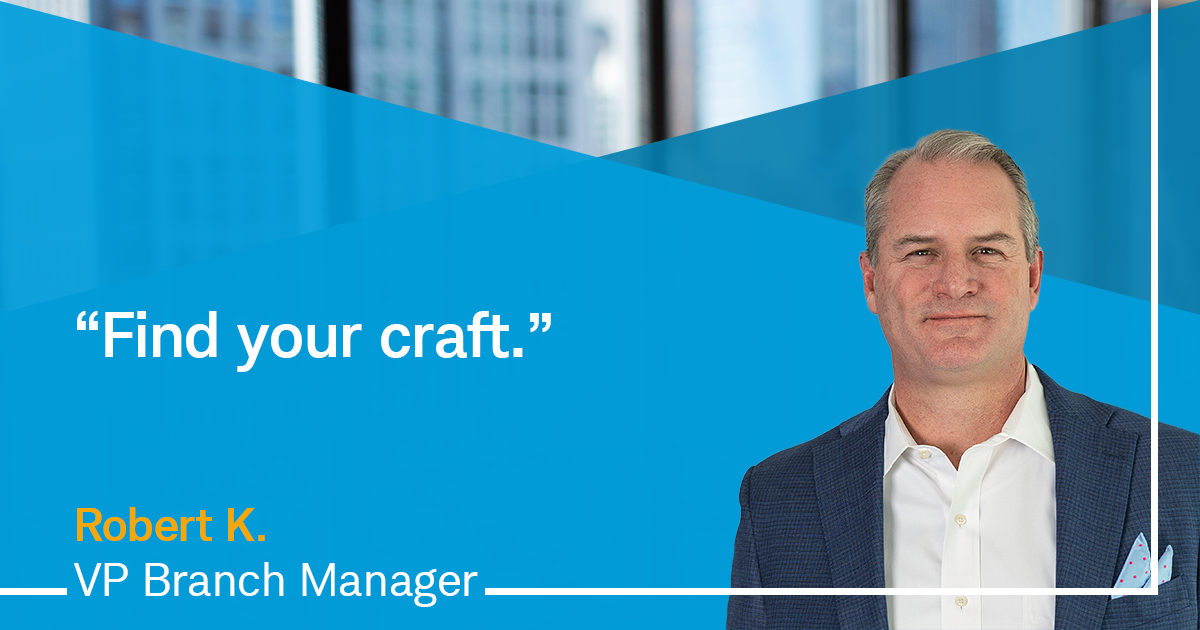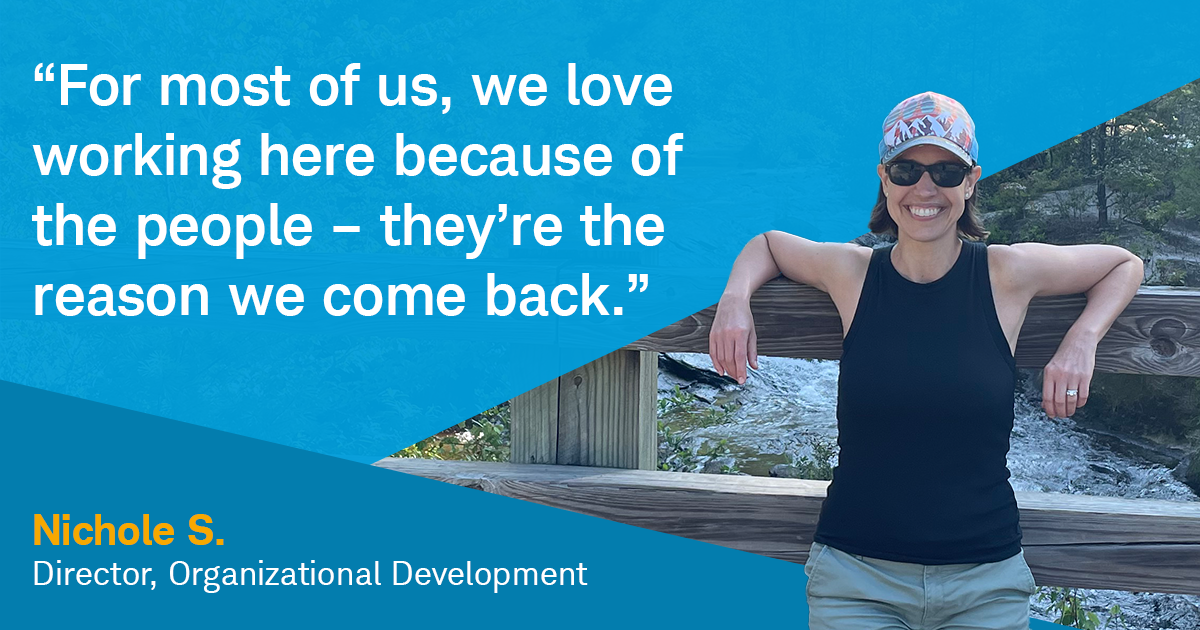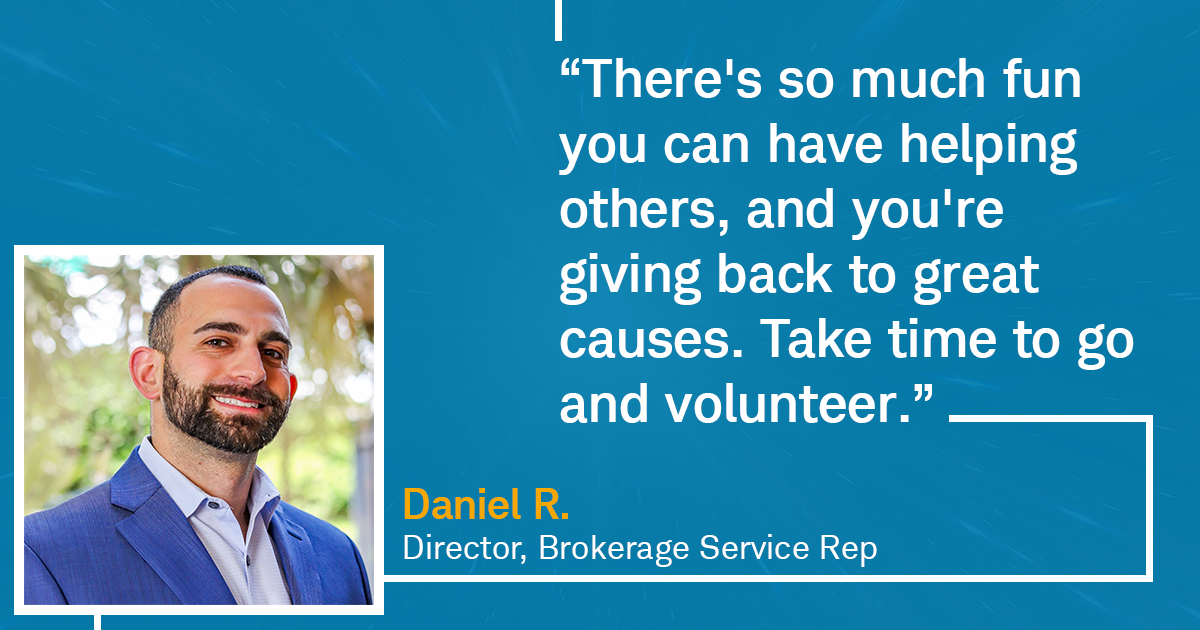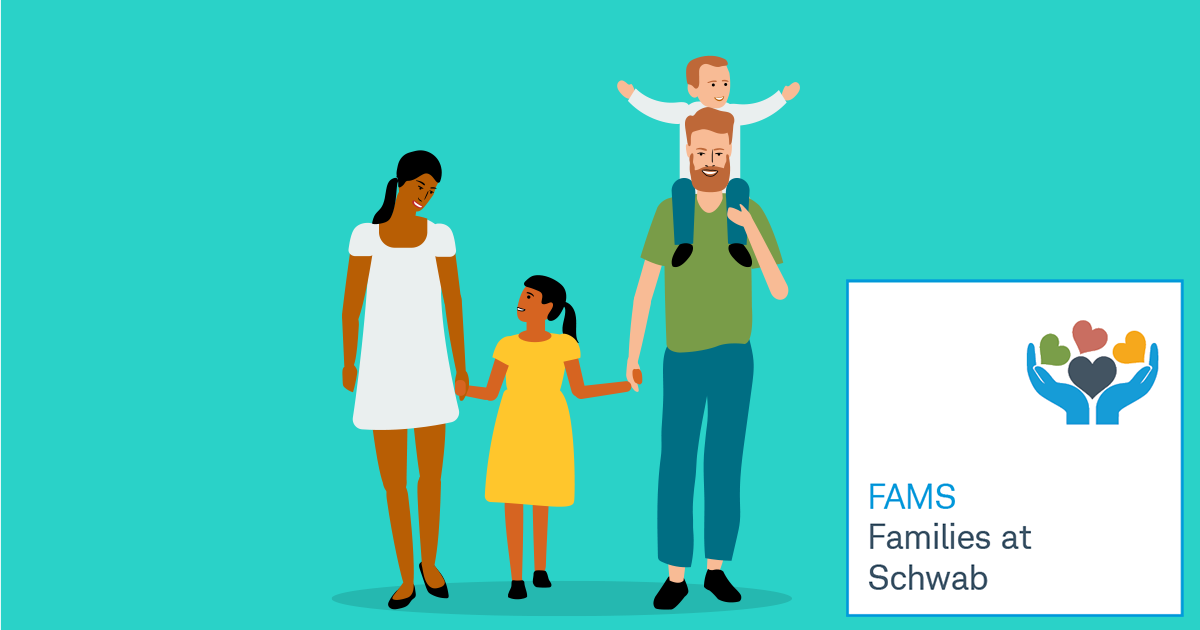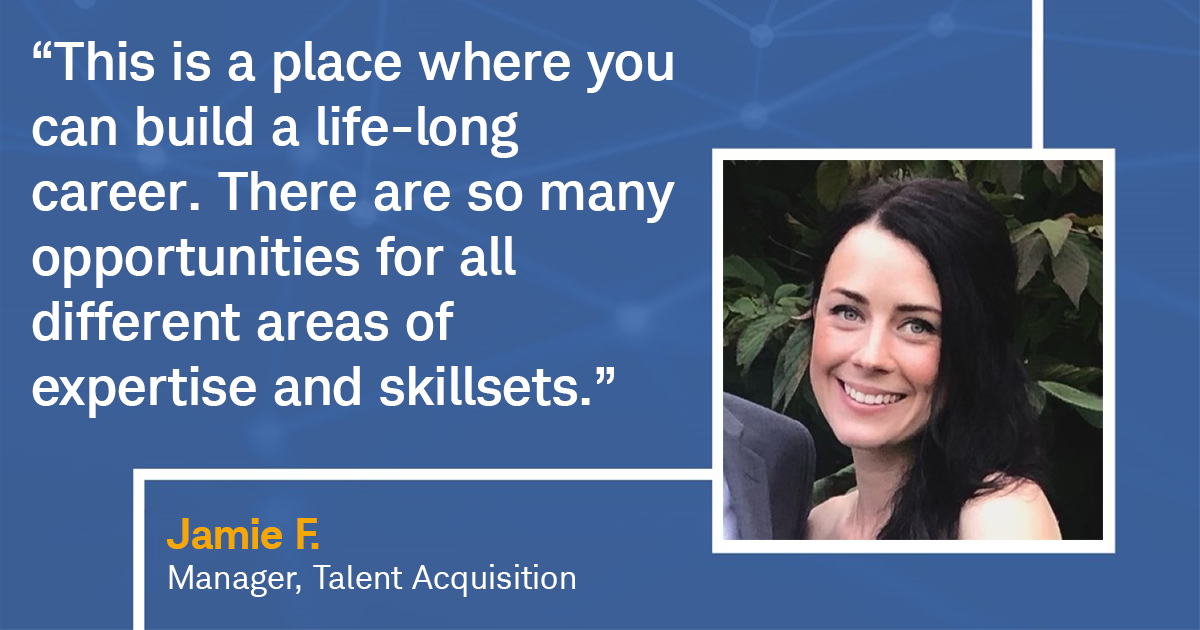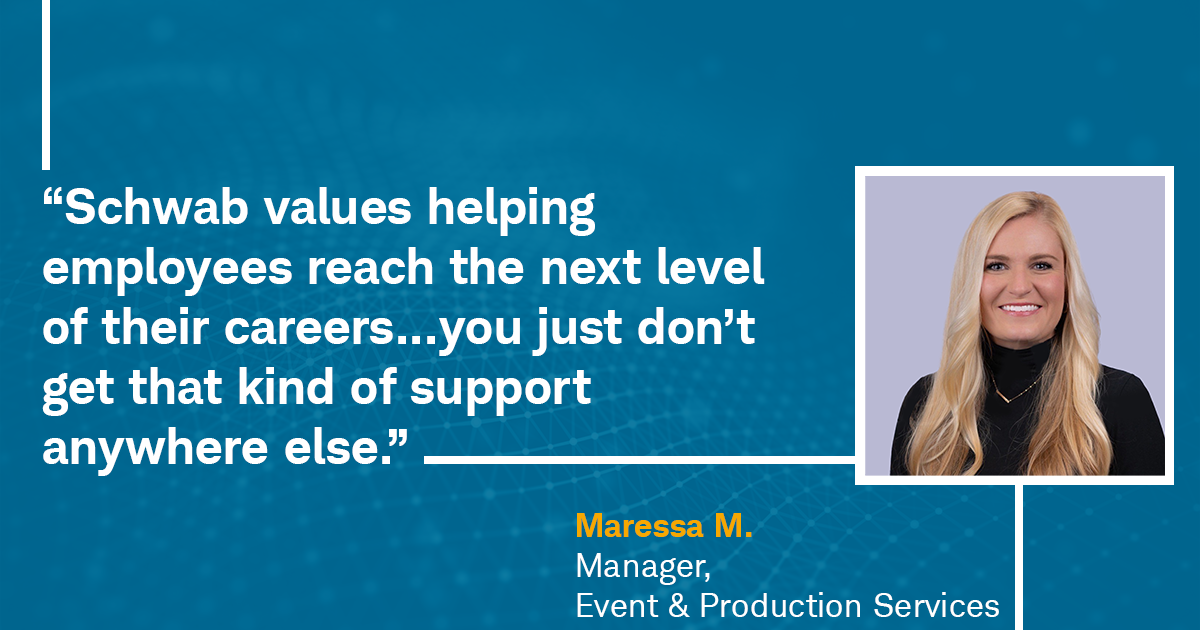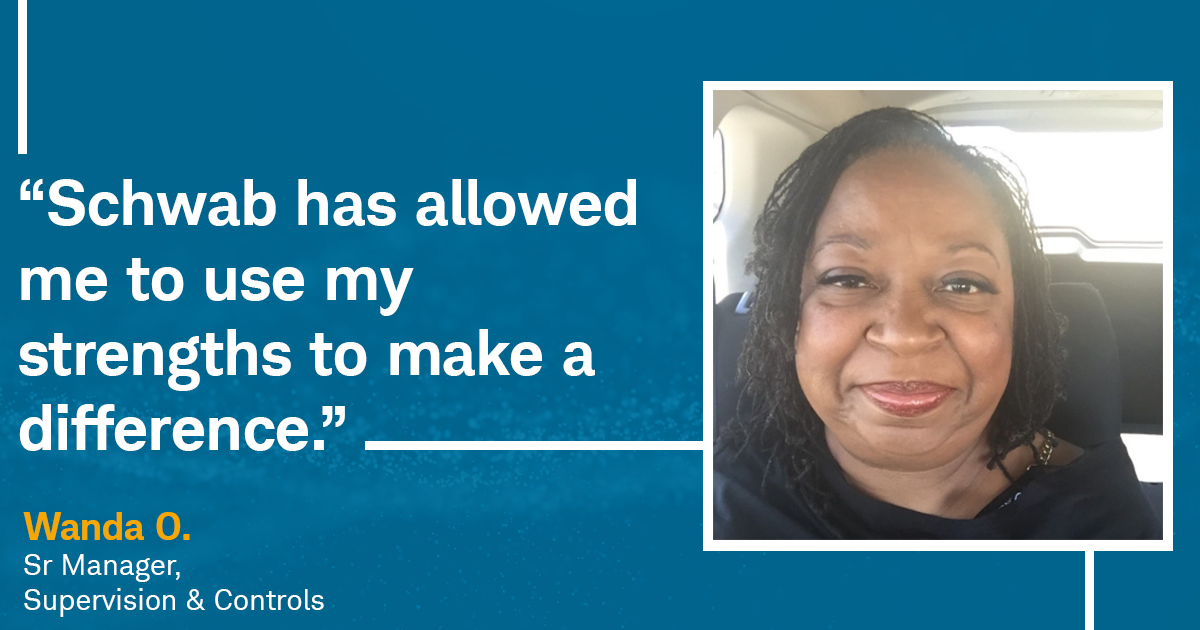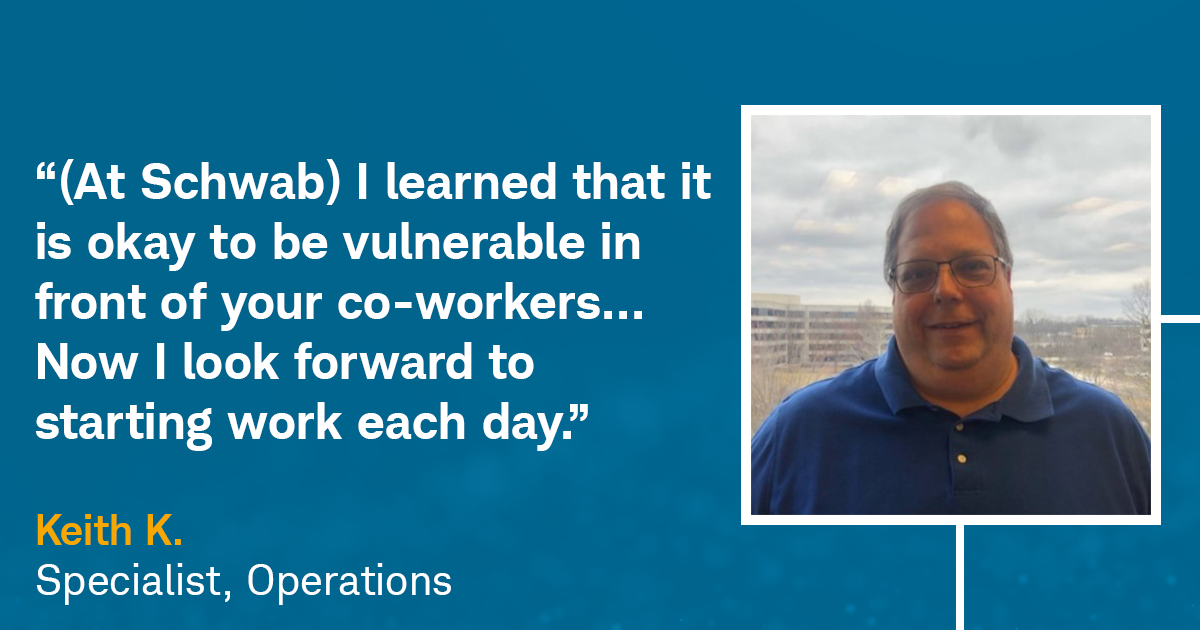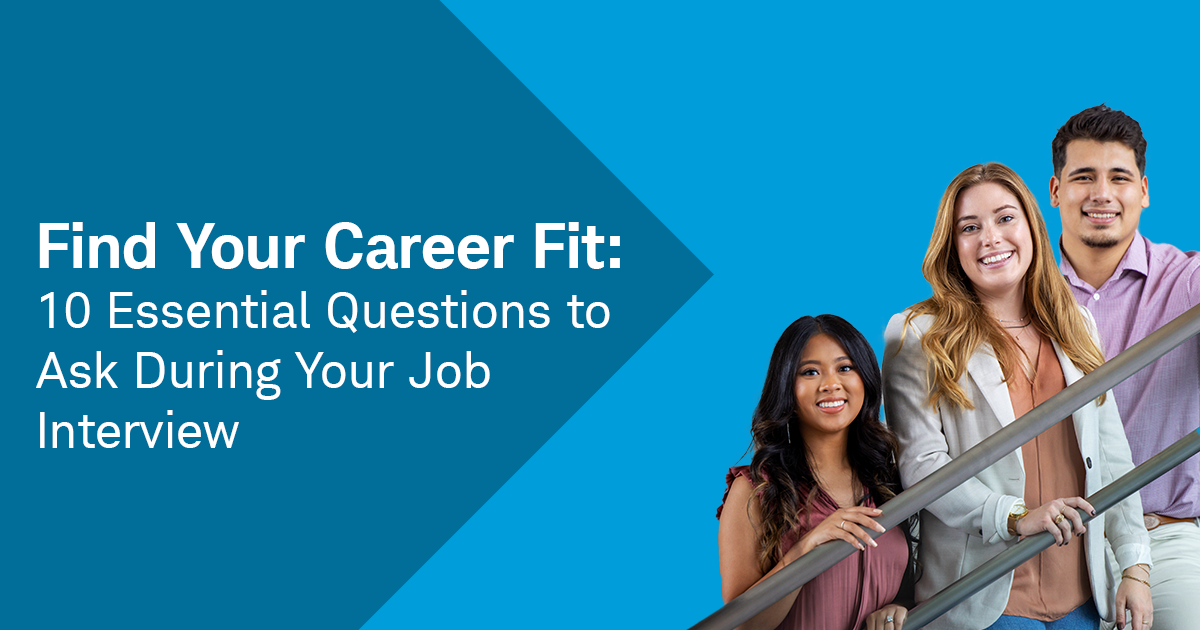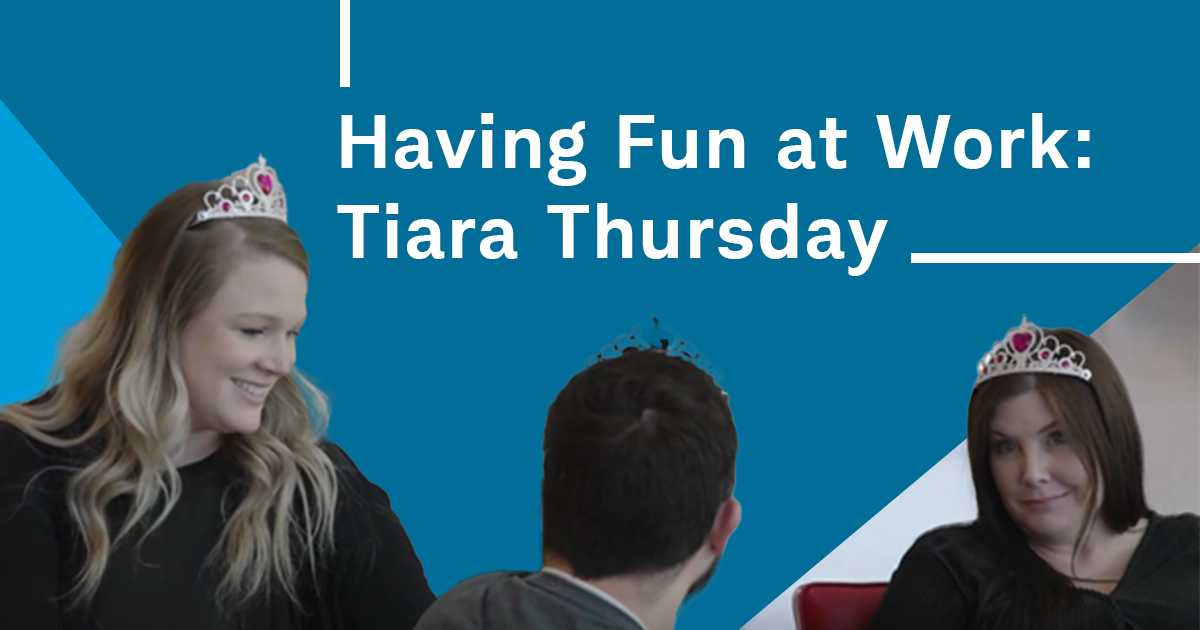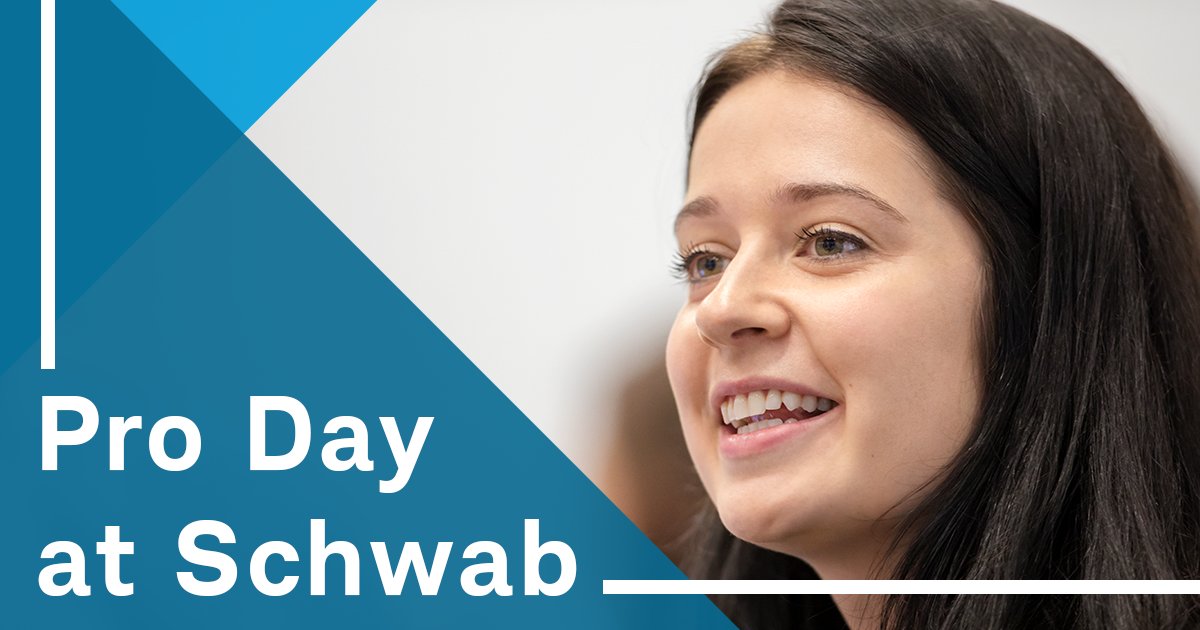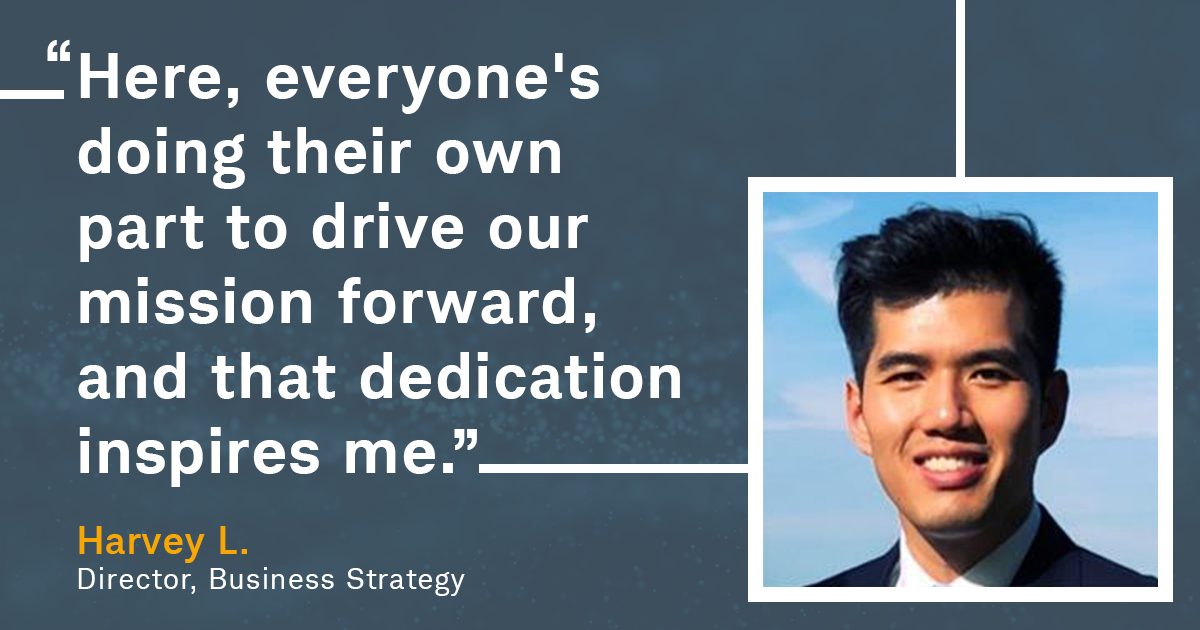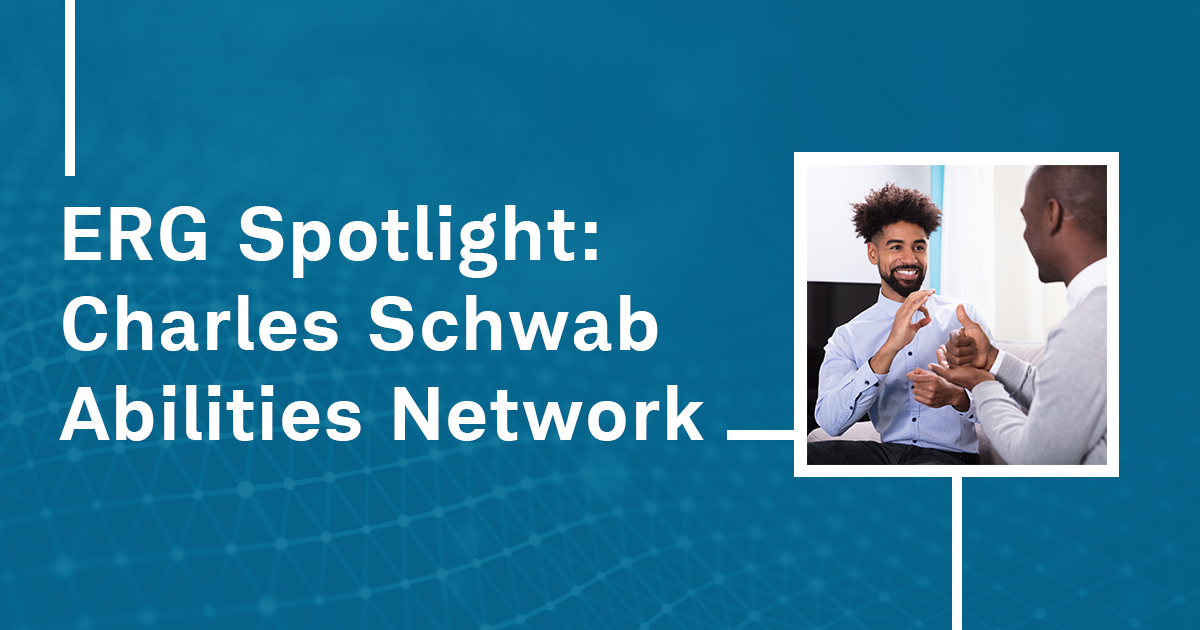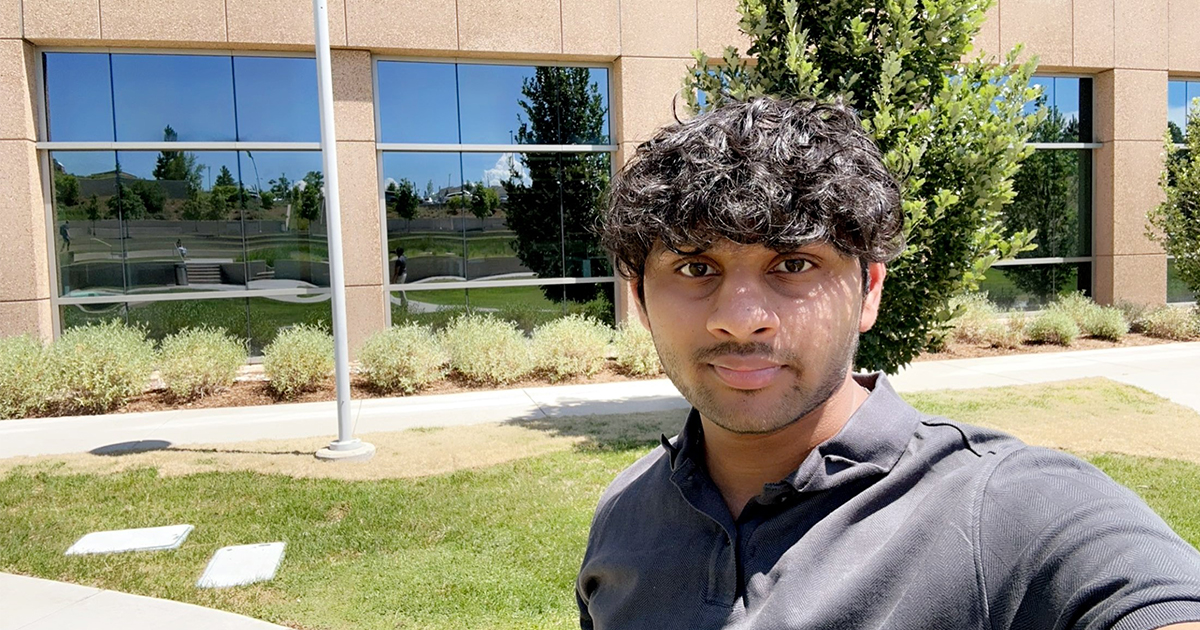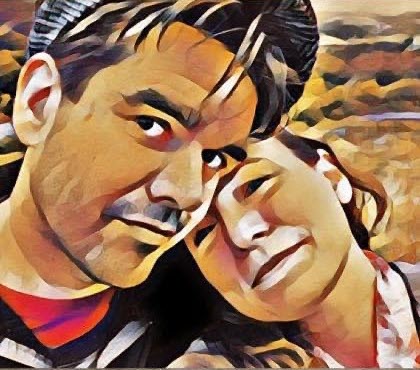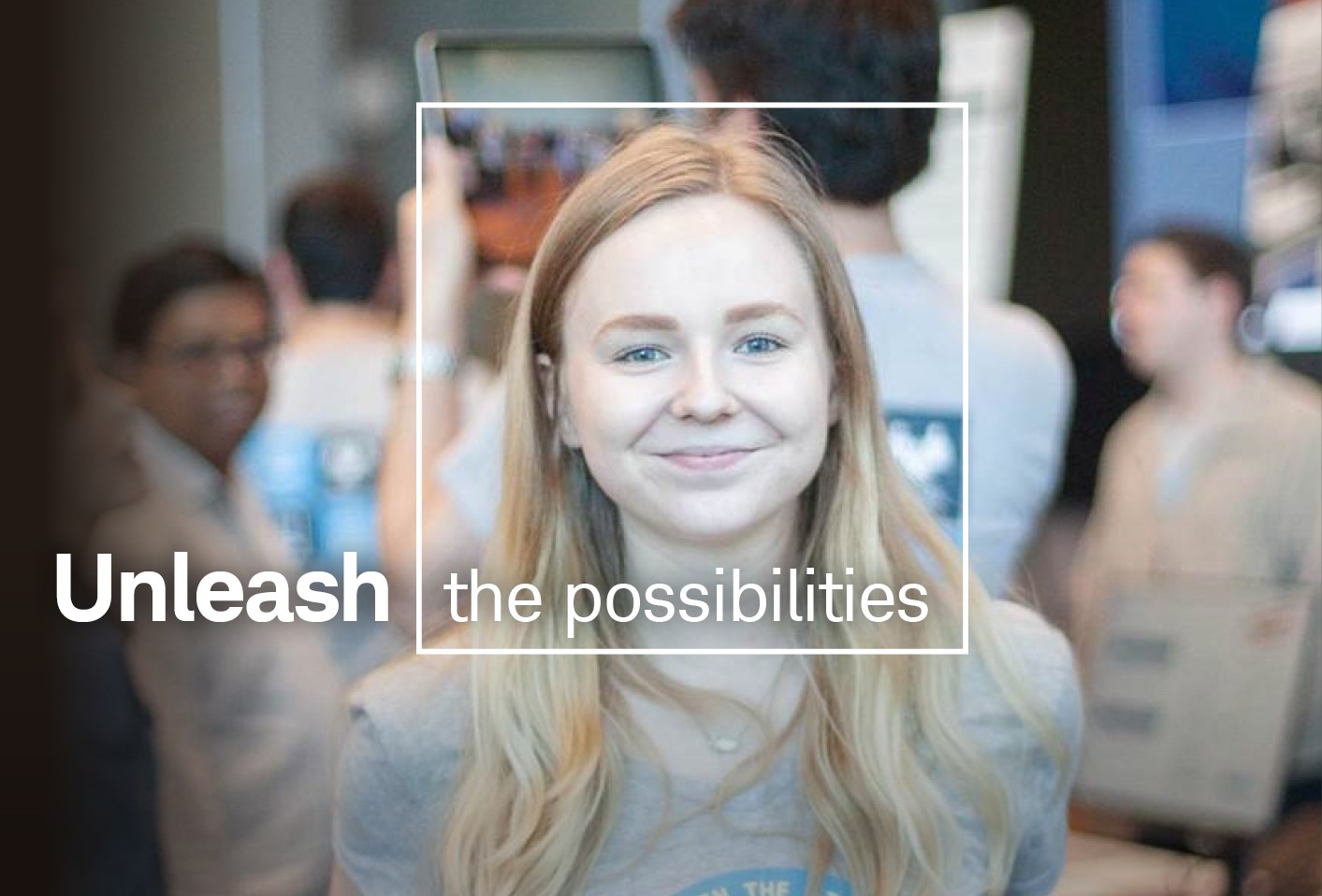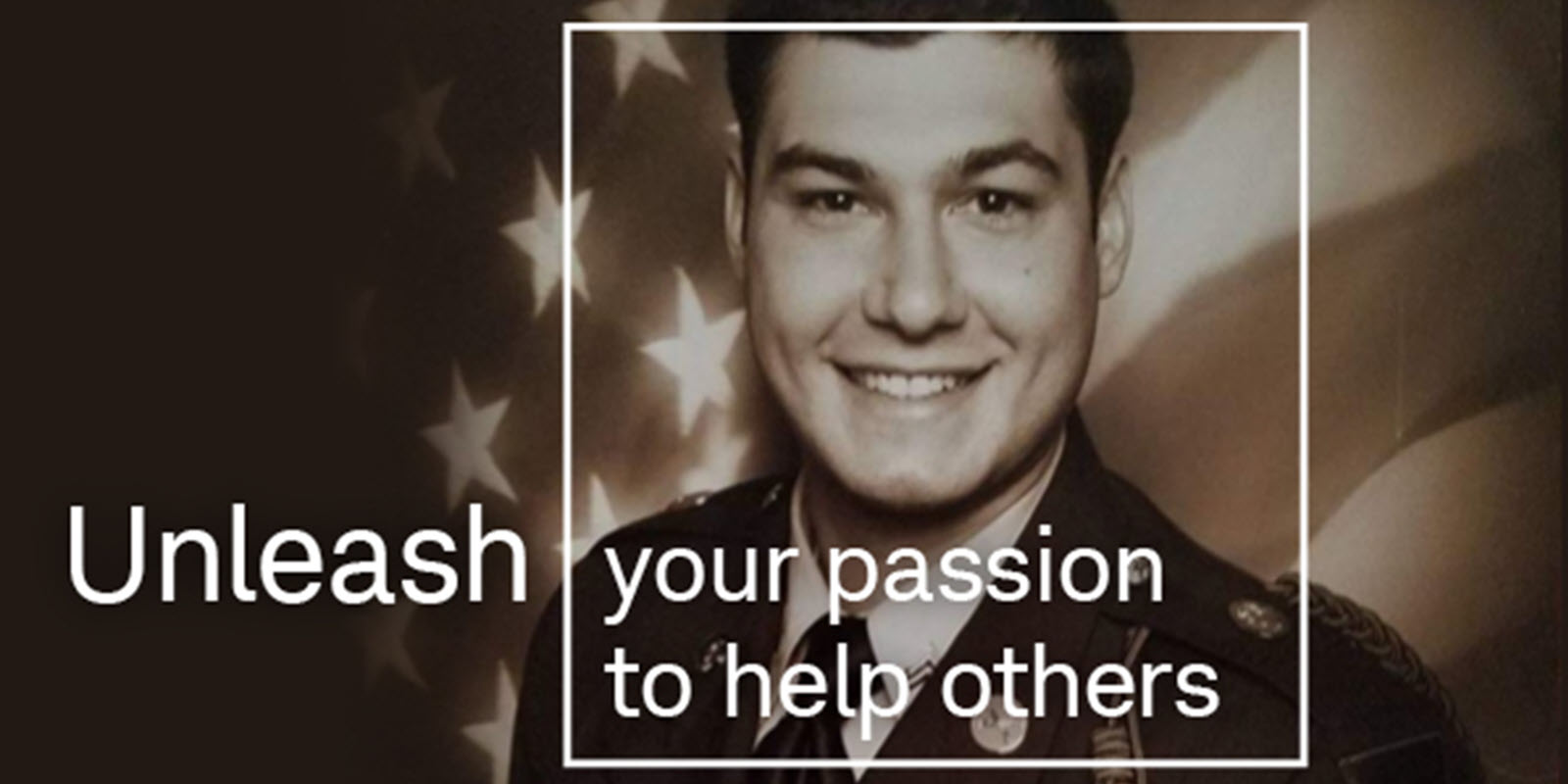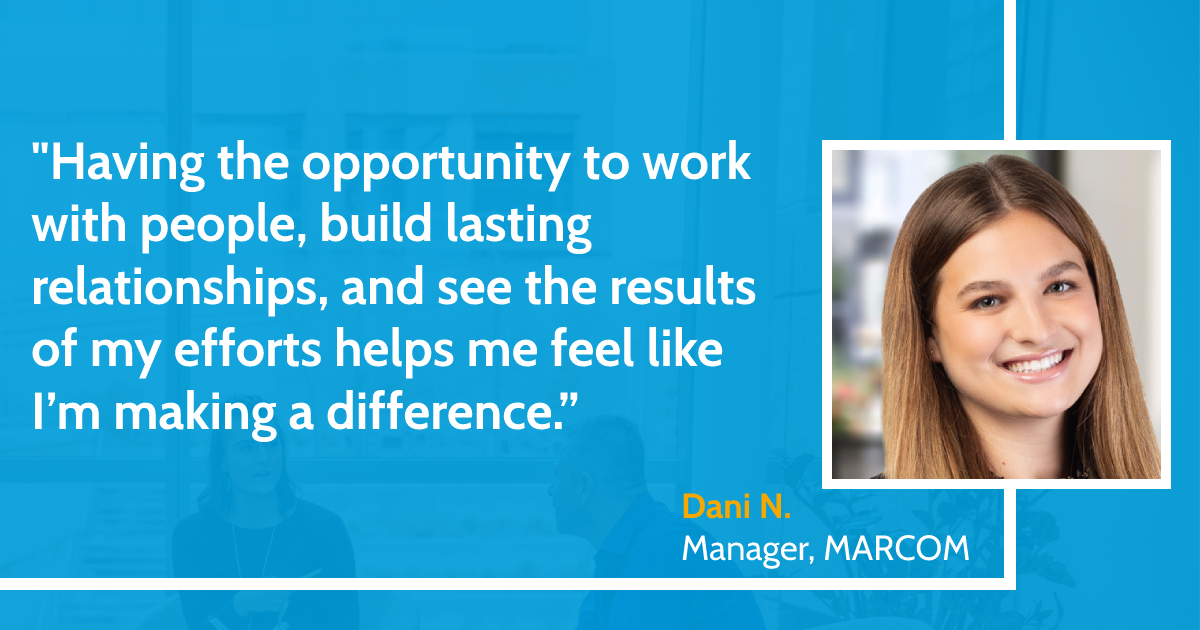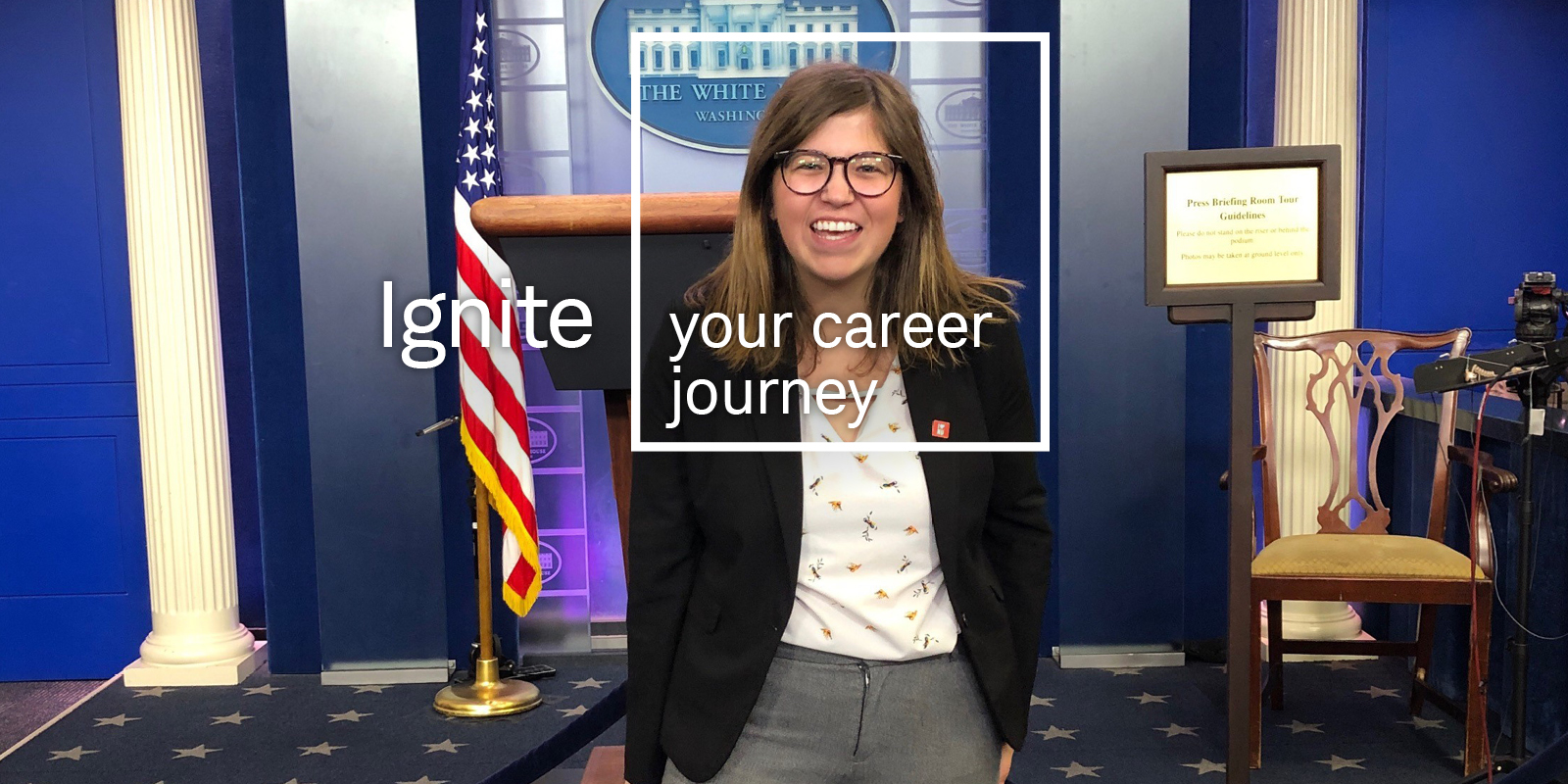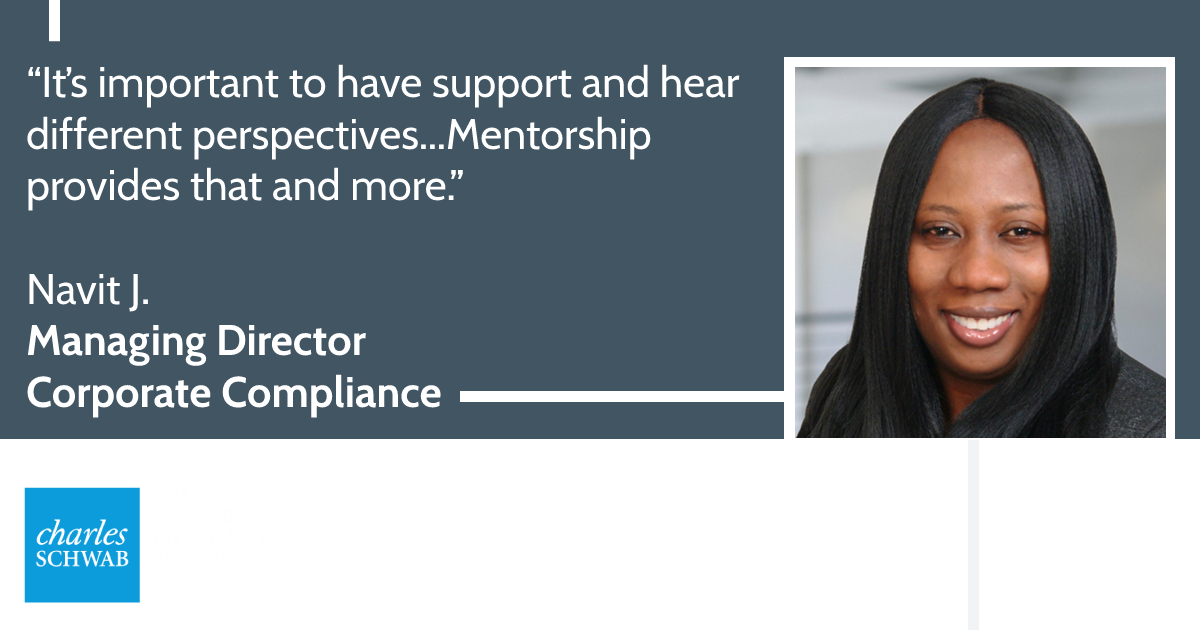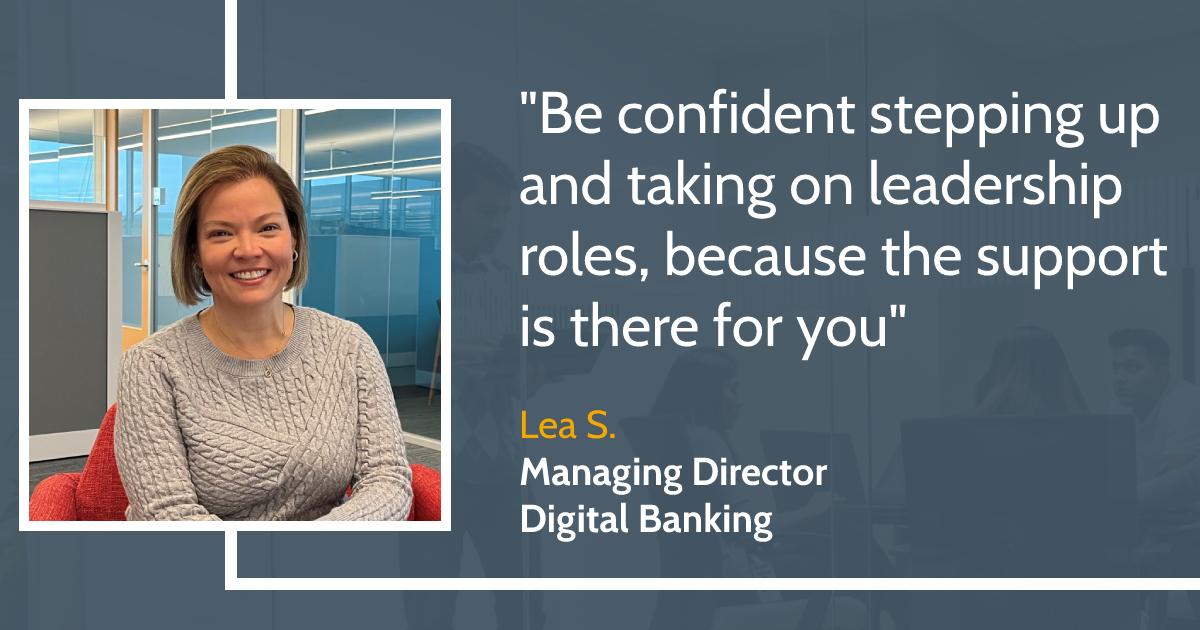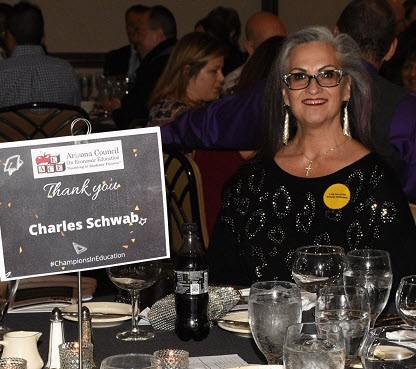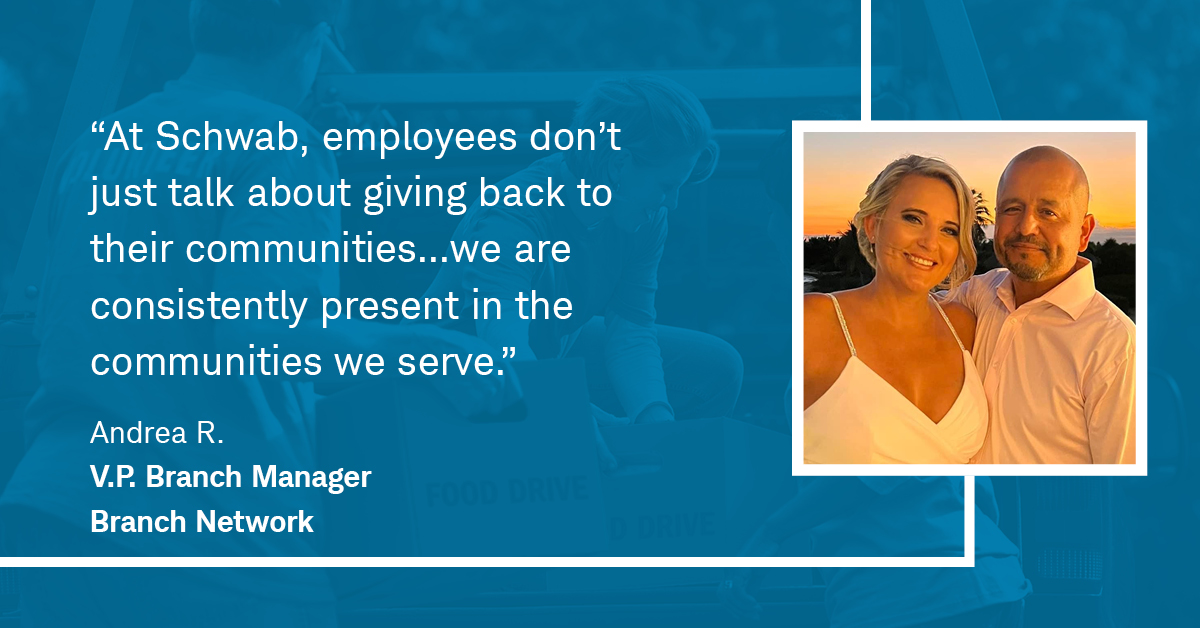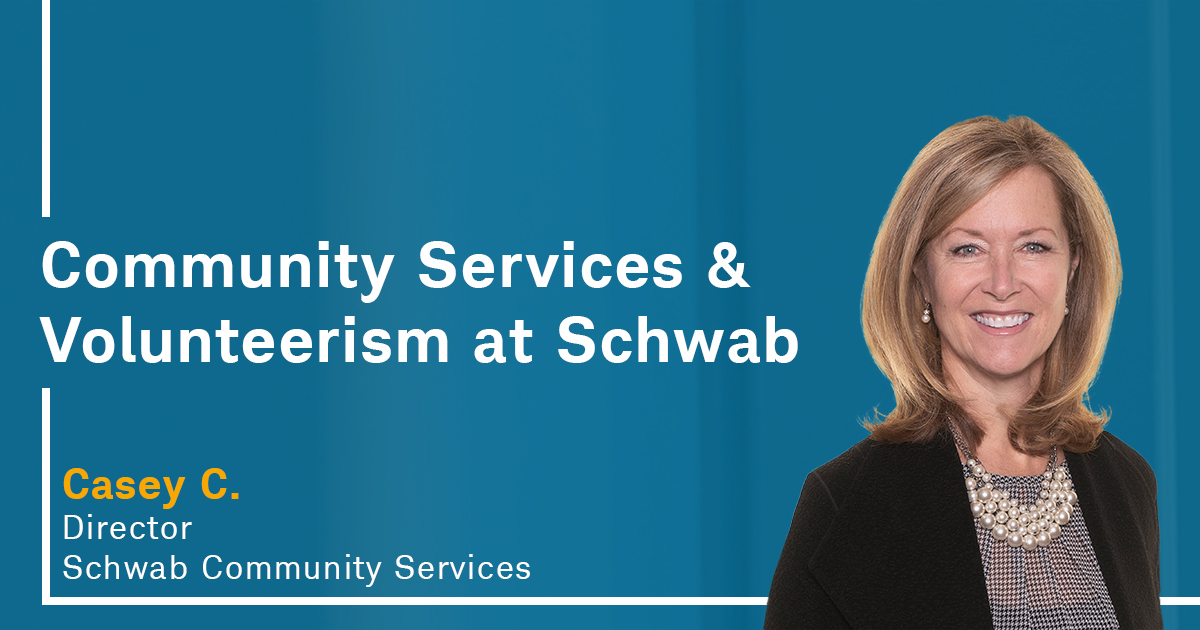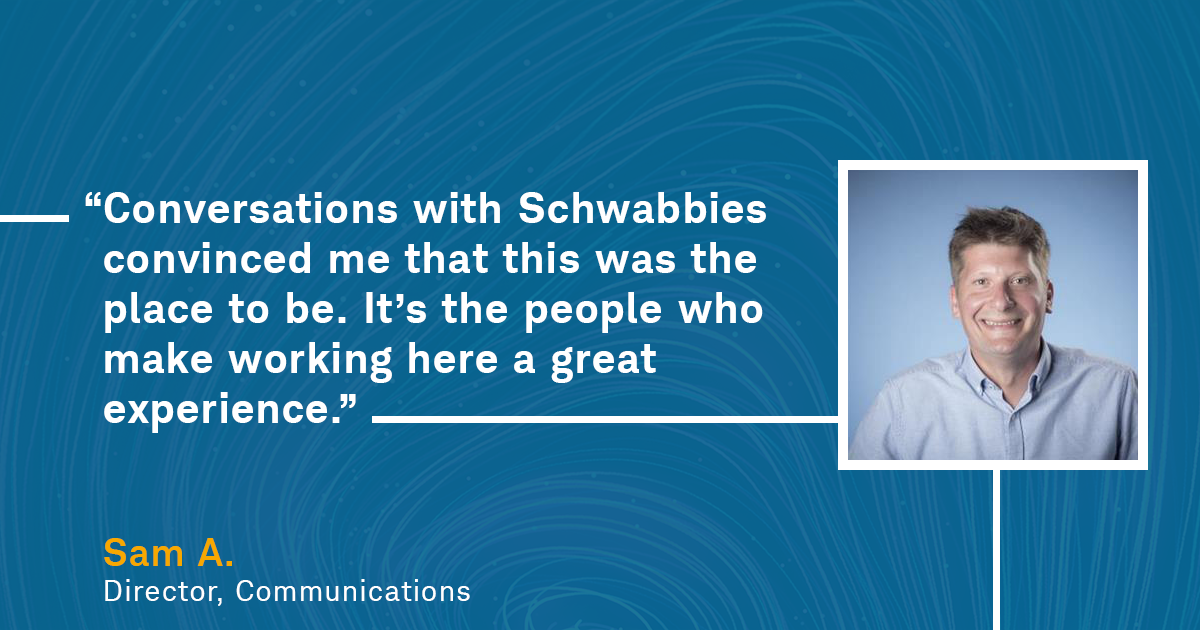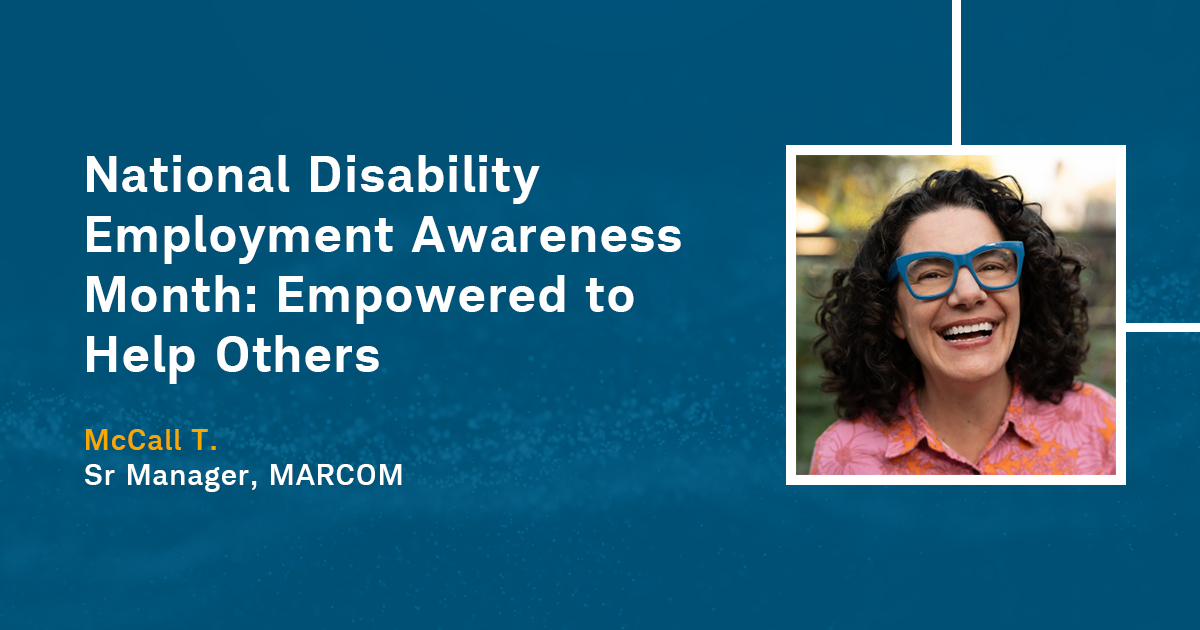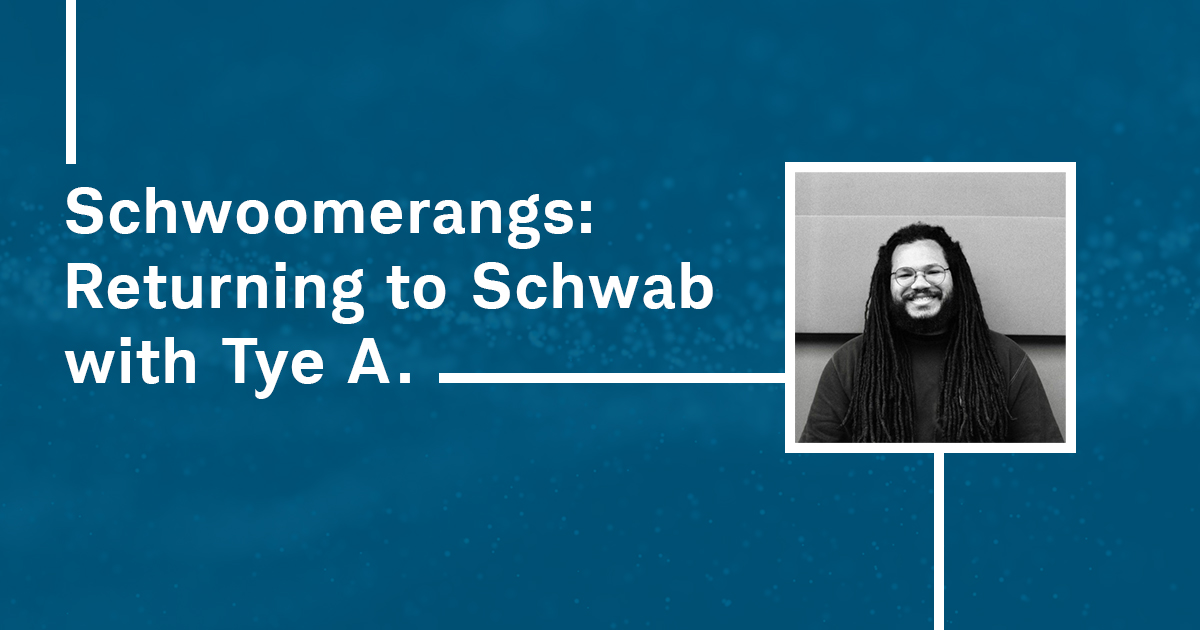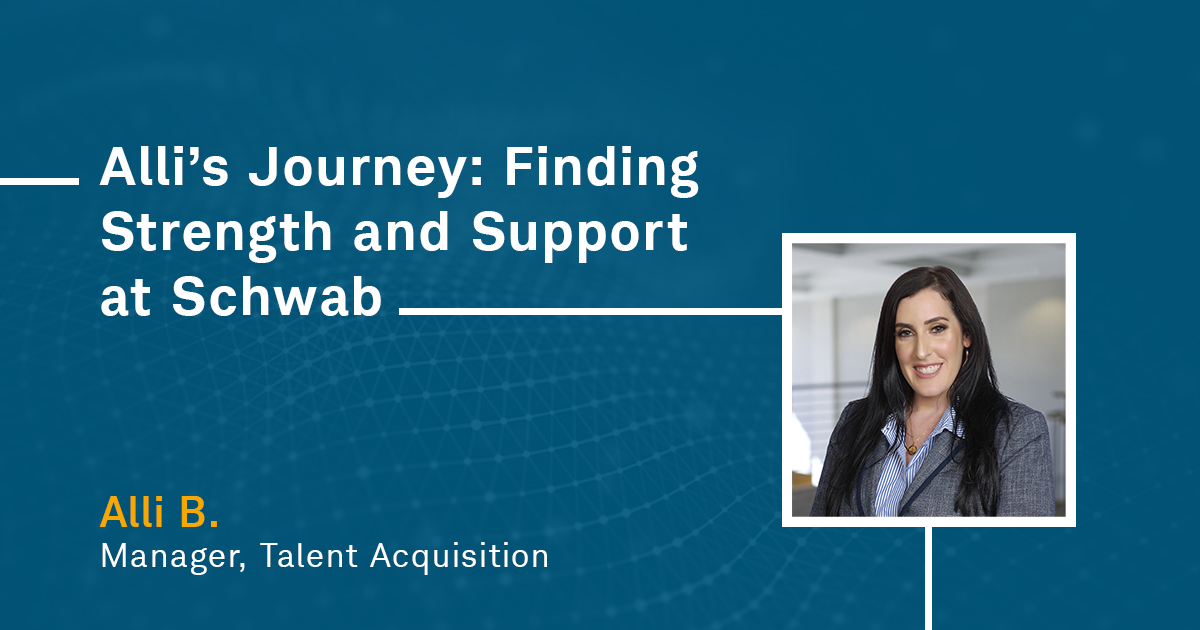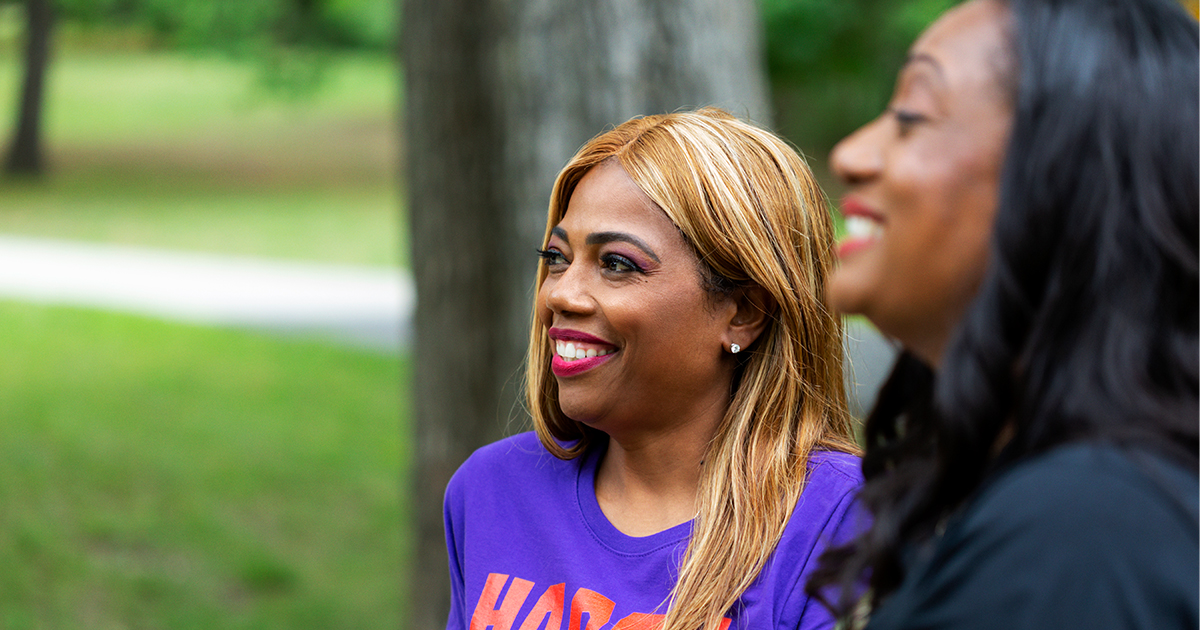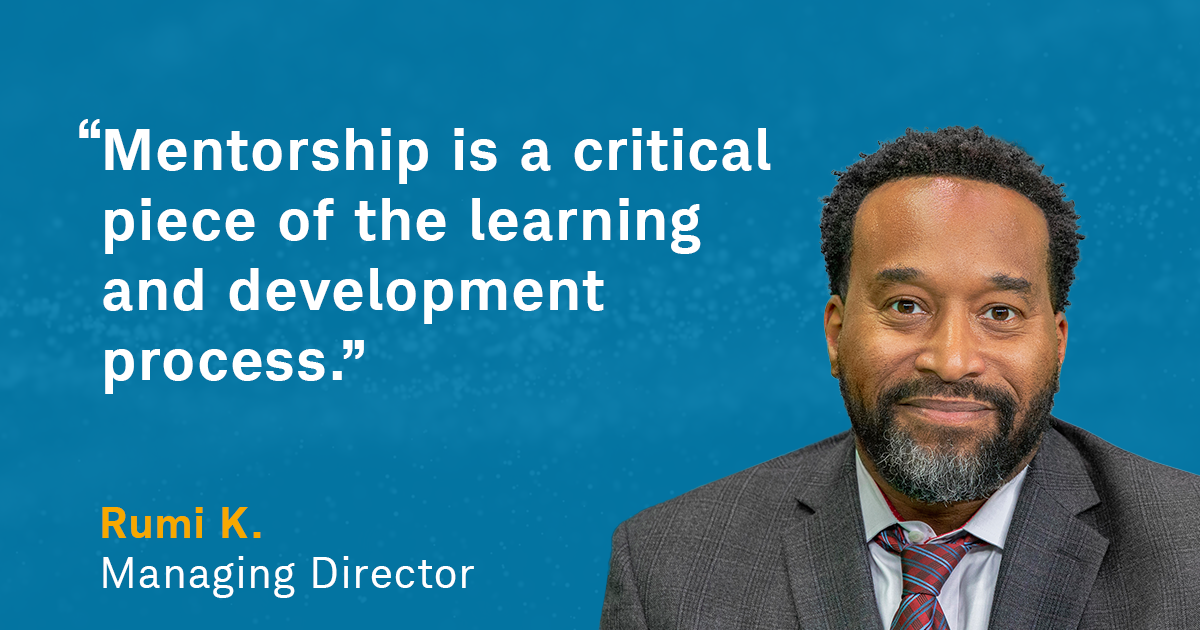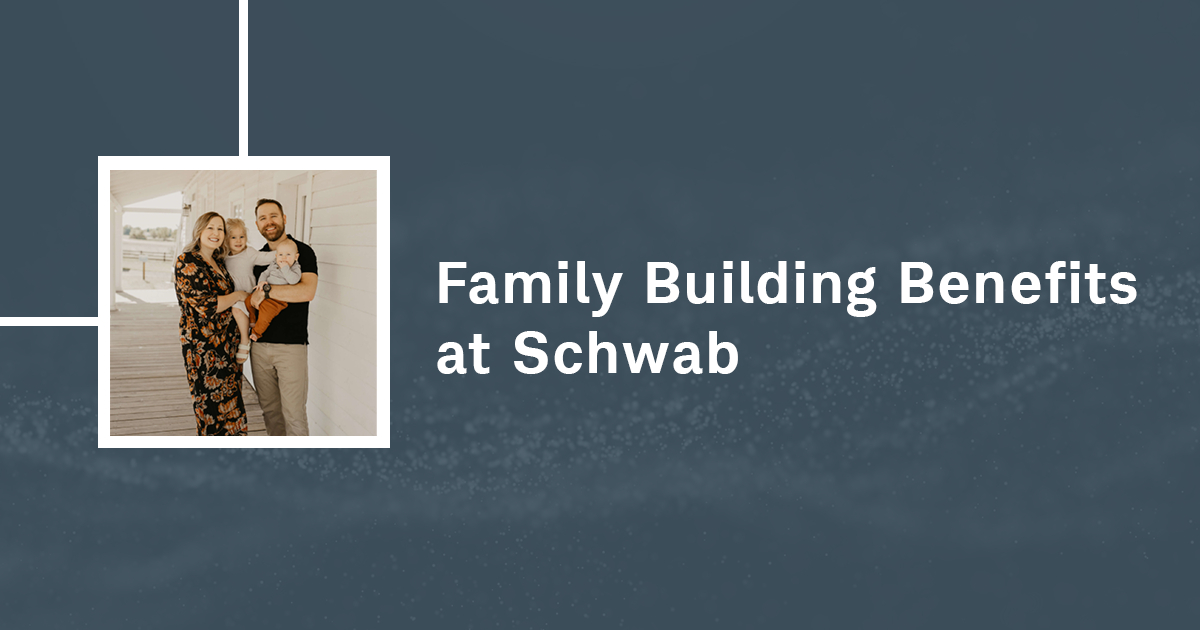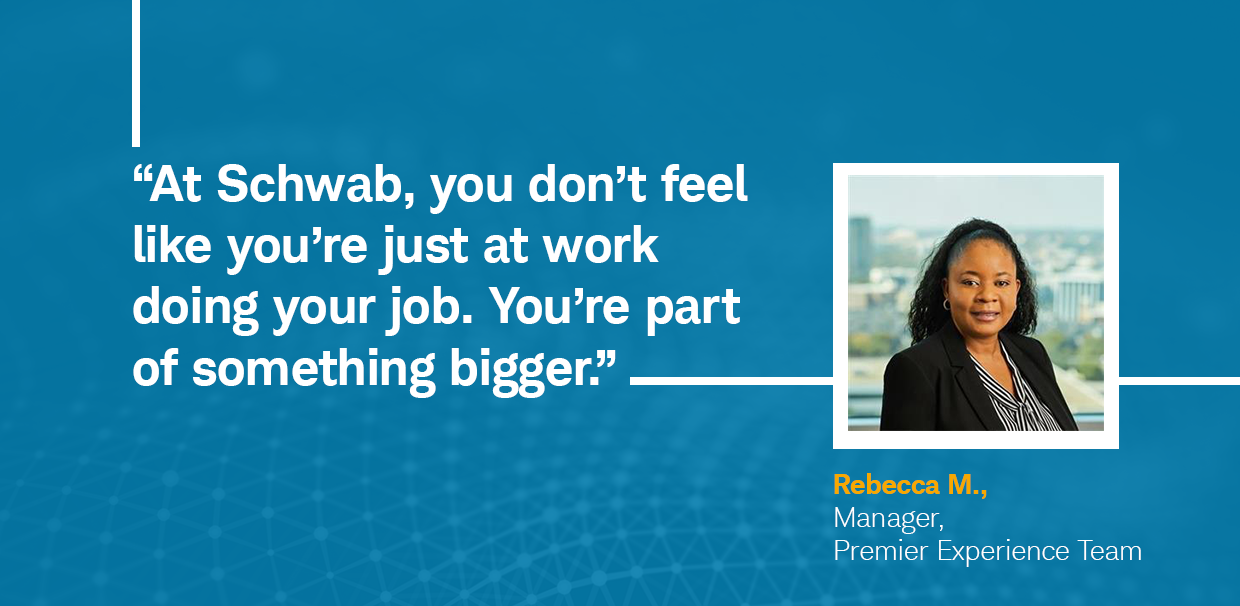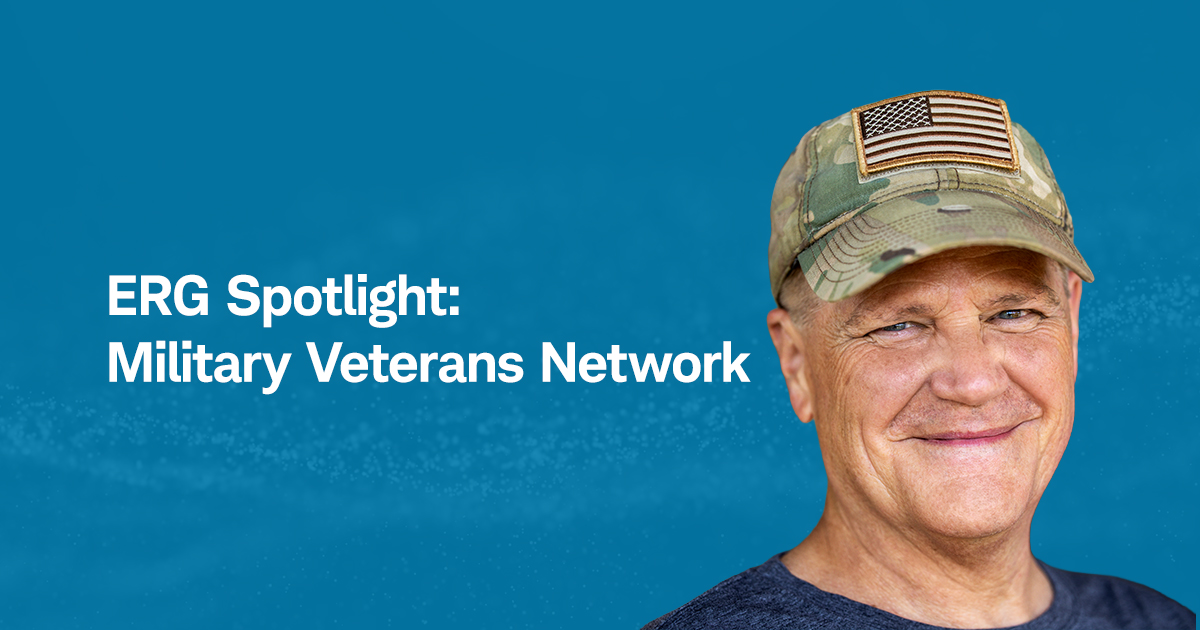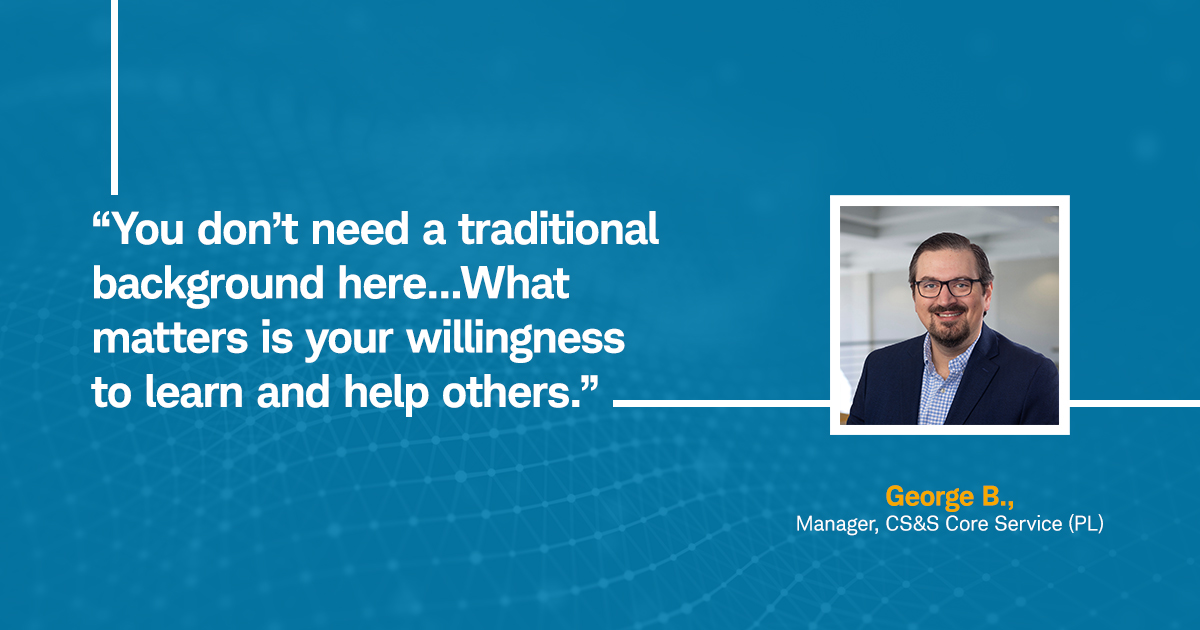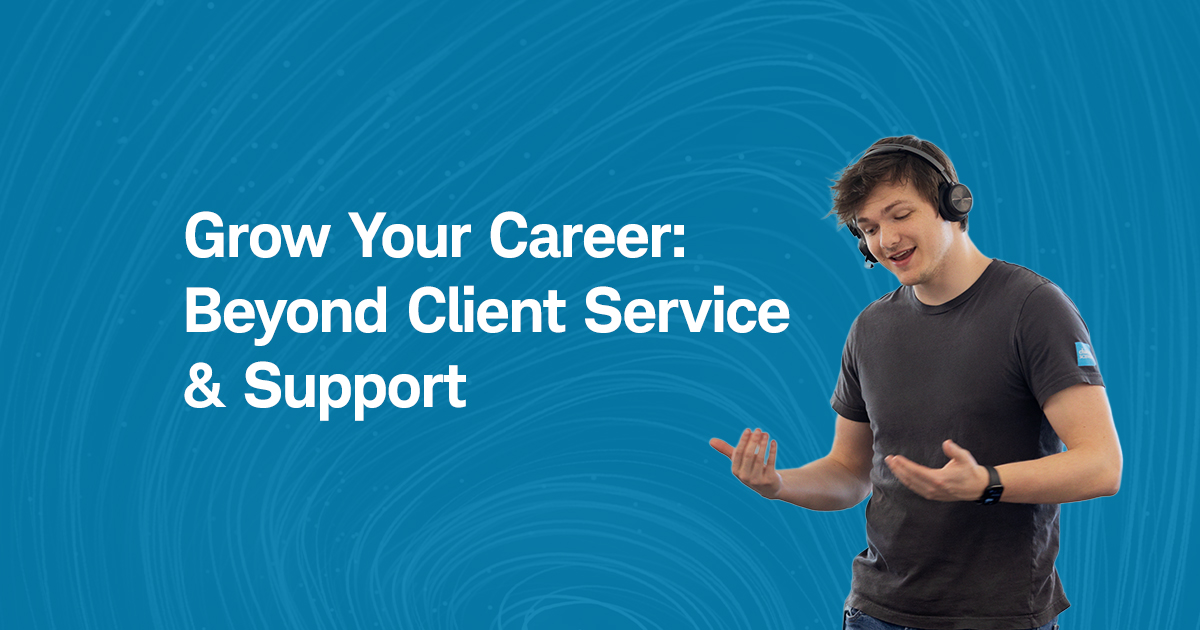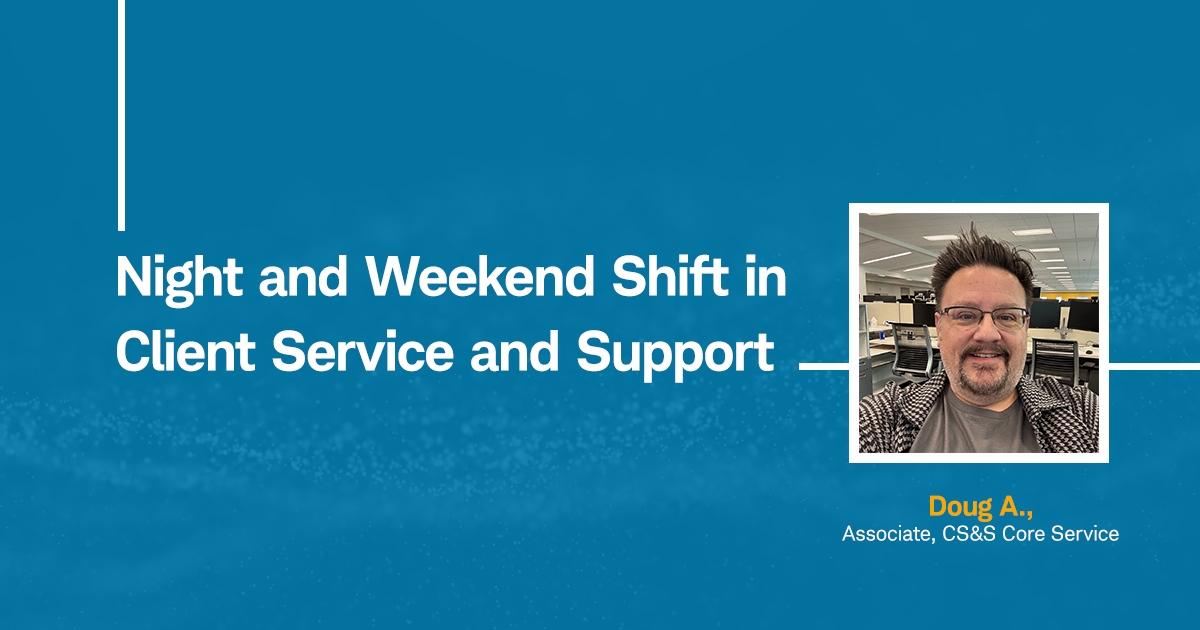We inspire our employees to own their careers and their voices.

Reach for the S.T.A.R.s: How to prepare for a behavioral-based interview at Schwab.
Preparing for a job interview can be stressful – from the extensive search through job postings to updating resumes, applying, and finally hearing back from a company after a long pause of silence. After all of that, it seems like one last thing is standing in your way of getting the job – the interview.
Interviewing is a necessary and essential piece of the job application process. For both the interviewer and the interviewee, the conversation that happens between one another reveals a lot about the other person and the firm. It’s a chance to find out more about the company, the role you’re applying for, and sometimes the opportunity to learn more about yourself.
Depending on what type of role you’re applying for, interviewing can look quite different from one person to the next. Here at Schwab, we pride ourselves on providing a consistent and thorough interviewing process that is replicated during each interview, so everyone has a fair chance at an open position.
Our particular interviewing approach stems from a behavioral-based interviewing methodology. What does this mean exactly? To answer this question, let’s look at what one of our Talent Advisors offered for advice and further information on the best way to prepare for an interview at Schwab.
What is behavioral-based interviewing?
Monica L. has been working at Schwab for almost 4 years now and is a certified Interviewing at Schwab trainer. Interviewing at Schwab is a training program that Talent Advisors and Hiring Managers go through to get well versed and certified in the art of interviewing. She also helped with leading the process team for converting Interviewing at Schwab to a virtual format. For those wondering what behavioral-based interviewing is or what it consists of, Monica puts it simply: “Past behavior often predicts future behavior.” What Monica means by this is that “I need to leave the interview feeling like I know exactly how someone would handle a situation here at Schwab based on how they handled the situation similar to that in their current environment. So rather than being hypothetical or very high level, I look for specificity and providing answers that are complete – not just saying what you did, but providing enough context to say, this is what was going on and completing a S.T.A.R.
Anatomy of the S.T.A.R.
For those not familiar with what a S.T.A.R. is, it’s an acronym that helps people remember how to best answer a behavioral-based interviewing question, including describing the Situation or Task at hand, Action, and Result that happened in a specific situation. Here at Schwab, S.T.A.R.s are a way Talent Advisors and interviewers assess candidates on how well they would perform the job and how their past behavior predicts their future behavior if they were to work at our firm.
So, what does a good S.T.A.R. entail?
To give the best, most informative S.T.A.R., Monica offers her advice on what to make sure candidates include: “It goes back to three areas: being specific, relevant, and recent. Those are the three areas that we look for. As an interviewer, I am thinking ‘Did I get a complete picture? Do I have the full story? How recent is that example and how relevant is that example?’ From a sales perspective, the candidate may have experience in selling something in a different industry, but the foundation of the selling is what I’m looking for. So being able to tie it back to the relevance.”Where to start.
For any candidate that isn’t familiar with behavioral-based interviewing, Monica recommends starting with intention and the importance of remembering your ‘why’: “Think about why you want this role or why you feel you’re qualified for this role and write down examples and situations that based on your understanding of the role. Why do you think that you’re qualified? Why do you think that you’re the best candidate? I think it’s important to start with the ‘why’. Why am I interested in this? Why am I a good fit for this? Why am I better than any other candidate for this? It starts with intention. Then I think you can build on what are some specific examples.” A good resource to help with this step is the job posting itself. Referring back to the job posting allows you to see how your skills and experience align with the qualifications or requirements of the role.
Be prepared.
Part of acknowledging your ‘why’ and intention is also being prepared, which Monica emphasized is a big piece of being successful during your behavioral-based interview: “If you can’t answer the questions of why do you want to work here or why you’re a good fit for this job and what your understanding is, going into the behavioral part will be tough. Instead, try to connect with something that we’re doing or ask questions to gather more information to leverage when you share why you want to be a part of the team.” Be able to clearly articulate your work history and transitions that you’ve had.
Lastly, Monica also wanted to call out that engaging in an interview at Schwab is also a great way to be exposed to certain characteristics about our culture: “In Schwab interviewing, you’re going to get your first taste of just truly how collaborative and team-oriented we are because you’re typically going to have a minimum of 3 people interviewing you, meaning a Talent Advisor and 2 Hiring Managers. It’s very rare where it’s just a TA interview and one Hiring Manager interview and that’s it.”
What to remember.
As you’re going forward in your preparation for interviewing at Schwab, let’s recap some important takeaways to keep in mind so you can Own Your Tomorrow:
- Past behavior predicts future behavior
- Answer in S.T.A.R. format
- Be specific, relevant, and recent
- Know your ‘why’ and intention
- Ask the necessary questions you need to feel good about pursuing an opportunity at Schwab
(0723-3SFW)
Career opportunities.
-
Financial Consultant Partner - Century City, CA
Los Angeles, California -
Sr Manager, User Experience Designer Lead
Austin, Texas -
Senior Manager, Software Development and Engineering
Southlake, Texas, Austin, Texas
-
 Learn more March 27, 2023
Learn more March 27, 2023 -
 Schwab stories There’s no better way to discover life at Schwab than hearing it from the amazing people who experience it every day. Learn more April 13, 2023
Schwab stories There’s no better way to discover life at Schwab than hearing it from the amazing people who experience it every day. Learn more April 13, 2023 -
 Learn more April 18, 2023
Learn more April 18, 2023 -
 Learn more June 29, 2023
Learn more June 29, 2023 -
 Learn more June 30, 2023
Learn more June 30, 2023 -
 Learn more July 03, 2023
Learn more July 03, 2023 -
 Learn more July 06, 2023
Learn more July 06, 2023 -
 Students We’re all-in when it comes to developing talent – from internships and academies to our tech leader program. Learn more July 07, 2023
Students We’re all-in when it comes to developing talent – from internships and academies to our tech leader program. Learn more July 07, 2023 -
 Learn more July 07, 2023
Learn more July 07, 2023 -
 Learn more July 10, 2023
Learn more July 10, 2023 -
 Learn more June 26, 2023
Learn more June 26, 2023 -
 Diversity and inclusion We make sure everyone feels valued, supported, and welcomed. Because that’s what moves us forward. Learn more June 30, 2023
Diversity and inclusion We make sure everyone feels valued, supported, and welcomed. Because that’s what moves us forward. Learn more June 30, 2023 -
 Learn more July 03, 2023
Learn more July 03, 2023 -
 Schwab Employee Benefits & Compenstation Our Total Rewards are designed to support the whole you – now, and in the future. Learn more about the benefits of working at Schwab. Learn more July 03, 2023 Benefits Home Page Related Content SR Sidebar Related Content
Schwab Employee Benefits & Compenstation Our Total Rewards are designed to support the whole you – now, and in the future. Learn more about the benefits of working at Schwab. Learn more July 03, 2023 Benefits Home Page Related Content SR Sidebar Related Content -
 Learn more July 06, 2023
Learn more July 06, 2023 -
 Schwab Stories There’s no better way to discover life at Schwab than hearing it from the amazing people who experience it every day. Learn more July 07, 2023
Schwab Stories There’s no better way to discover life at Schwab than hearing it from the amazing people who experience it every day. Learn more July 07, 2023 -
 Learn more July 11, 2023
Learn more July 11, 2023 -
 Learn more July 06, 2023
Learn more July 06, 2023 -
 Learn more July 10, 2023
Learn more July 10, 2023 -
 Learn more July 11, 2023
Learn more July 11, 2023 -
 Learn more June 28, 2023
Learn more June 28, 2023 -
 Learn more July 03, 2023
Learn more July 03, 2023 -
 Client Service At Schwab, our commitment to seeing the world “through clients’ eyes” underlines everything we do, and our Client Service & Support team is often the first place client's experience it. Learn more July 07, 2023 Service Related Content
Client Service At Schwab, our commitment to seeing the world “through clients’ eyes” underlines everything we do, and our Client Service & Support team is often the first place client's experience it. Learn more July 07, 2023 Service Related Content -
 Learn more July 07, 2023
Learn more July 07, 2023 -
 Learn more July 07, 2023
Learn more July 07, 2023 -
 Empowering Success: Finding the Support to Pass Series 7 Learn how Schwab supported Jessica M. on her journey to passing her Series 7 exam and becoming a full-time Schwabbie. Learn more June 21, 2023 Story Hub Career Development
Empowering Success: Finding the Support to Pass Series 7 Learn how Schwab supported Jessica M. on her journey to passing her Series 7 exam and becoming a full-time Schwabbie. Learn more June 21, 2023 Story Hub Career Development -
 Career Development: Les S. Builds a Diverse Career at Schwab Read how Les S. in Digital Product Management reinvented her career path to support innovation at Schwab. Learn more June 21, 2023 Story Hub Career Development
Career Development: Les S. Builds a Diverse Career at Schwab Read how Les S. in Digital Product Management reinvented her career path to support innovation at Schwab. Learn more June 21, 2023 Story Hub Career Development -
 Build a Career at Schwab: Hear Matthew's Story | Schwab Jobs They say time flies when you're having fun! For Schwabbie Matthew B., it's been 5 years since his start as an intern back in 2014. Read on to find out how Matthew's exciting career journey started in the hospitality industry and ended up in a software engineering role! Learn more June 21, 2023 Story Hub Career Development
Build a Career at Schwab: Hear Matthew's Story | Schwab Jobs They say time flies when you're having fun! For Schwabbie Matthew B., it's been 5 years since his start as an intern back in 2014. Read on to find out how Matthew's exciting career journey started in the hospitality industry and ended up in a software engineering role! Learn more June 21, 2023 Story Hub Career Development -
 Building a Career at Schwab: Travis's Story Read how Travis uncovered his career opportunity and gained professional development in Wealth Management as a Financial Consultant at Charles Schwab. Learn more July 20, 2023 Career Development
Building a Career at Schwab: Travis's Story Read how Travis uncovered his career opportunity and gained professional development in Wealth Management as a Financial Consultant at Charles Schwab. Learn more July 20, 2023 Career Development -
 Military Veterans Network: Tammy's Story Learn how Tammy supports veterans through our employee resource group Military Veterans Network at Schwab. Learn more July 28, 2023 Story Hub Culture & Inclusion
Military Veterans Network: Tammy's Story Learn how Tammy supports veterans through our employee resource group Military Veterans Network at Schwab. Learn more July 28, 2023 Story Hub Culture & Inclusion -
 Employee Resource Group Spotlight: PRIDE+ Happy PRIDE month! Learn about our LGBTQ+ Employee Resource Group at Schwab PRIDE+. Learn more July 31, 2023 Story Hub Culture & Inclusion
Employee Resource Group Spotlight: PRIDE+ Happy PRIDE month! Learn about our LGBTQ+ Employee Resource Group at Schwab PRIDE+. Learn more July 31, 2023 Story Hub Culture & Inclusion -
 Jackie's FINRA Series 7 Exam Journey Read how passing the Series 7 exam transformed Jackie's career trajectory, and how the support she encountered at Schwab helped her become a Financial Consultant Partner at our firm. Learn more August 10, 2023 Story Hub Career Development Retail Related Content
Jackie's FINRA Series 7 Exam Journey Read how passing the Series 7 exam transformed Jackie's career trajectory, and how the support she encountered at Schwab helped her become a Financial Consultant Partner at our firm. Learn more August 10, 2023 Story Hub Career Development Retail Related Content -
 Hybrid work & flexibility at Schwab. Learn about our hybrid work schedule that provides you the freedom to work from home and office. Learn more August 10, 2023
Hybrid work & flexibility at Schwab. Learn about our hybrid work schedule that provides you the freedom to work from home and office. Learn more August 10, 2023 -
 ERG Spotlight: Schwab Organization of Latinx (SOL) Read how our Schwab Organization of Latinx (SOL) Employee Resource Group empowers Latinx individuals to succeed in their professional careers. Learn more September 13, 2023 Story Hub Culture & Inclusion
ERG Spotlight: Schwab Organization of Latinx (SOL) Read how our Schwab Organization of Latinx (SOL) Employee Resource Group empowers Latinx individuals to succeed in their professional careers. Learn more September 13, 2023 Story Hub Culture & Inclusion -
 Women in Tech: Olivia V. Meet Olivia V., one of our Technology Product Management superstars. Read how, over the course of 13 years at Schwab, she’s transitioned from finance into tech and built an impactful career. Learn more September 29, 2023 Story Hub Career Development Home Page Related Content Technology Related Content
Women in Tech: Olivia V. Meet Olivia V., one of our Technology Product Management superstars. Read how, over the course of 13 years at Schwab, she’s transitioned from finance into tech and built an impactful career. Learn more September 29, 2023 Story Hub Career Development Home Page Related Content Technology Related Content -
 Build Your Career: 30 Years at Schwab with Robert K., VP Branch Manager Learn how Robert K., a 30-year Schwabbie and VP Branch Manager, used his passion for investment to experience career growth, professional stability, and become a leader in finance. Learn more October 23, 2023 Story Hub Career Development Retail Related Content
Build Your Career: 30 Years at Schwab with Robert K., VP Branch Manager Learn how Robert K., a 30-year Schwabbie and VP Branch Manager, used his passion for investment to experience career growth, professional stability, and become a leader in finance. Learn more October 23, 2023 Story Hub Career Development Retail Related Content -
 Career Changer: Academia to Financial Services Learn how Miranda used her degree in Machine Learning to transition from a scientific researcher to a brokerage specialist in Trader Services. Learn more November 06, 2023 Story Hub Career Development Home Page Related Content Service Related Content SR Sidebar Related Content
Career Changer: Academia to Financial Services Learn how Miranda used her degree in Machine Learning to transition from a scientific researcher to a brokerage specialist in Trader Services. Learn more November 06, 2023 Story Hub Career Development Home Page Related Content Service Related Content SR Sidebar Related Content -
 Schwoomerangs: Returning to Schwab with Nichole S. Learn why Nichole S., a Director in Talent & Organizational Development and one of our "Schwoomerangs", returned to Schwab -- and how her work helps others thrive professionally. Learn more November 14, 2023 Story Hub Life at Schwab Culture & Inclusion
Schwoomerangs: Returning to Schwab with Nichole S. Learn why Nichole S., a Director in Talent & Organizational Development and one of our "Schwoomerangs", returned to Schwab -- and how her work helps others thrive professionally. Learn more November 14, 2023 Story Hub Life at Schwab Culture & Inclusion -
 Season of Giving: Empowering Communities Through Volunteerism with Daniel R. Daniel, United States Marine Corps Veteran and Director, is playing a crucial part in fighting food insecurity for those in need. Learn about his journey from the military to Schwab, how he's creating a positive impact through volunteerism, and the importance of lending a helping hand. Learn more November 16, 2023 Story Hub Career Development Culture & Inclusion
Season of Giving: Empowering Communities Through Volunteerism with Daniel R. Daniel, United States Marine Corps Veteran and Director, is playing a crucial part in fighting food insecurity for those in need. Learn about his journey from the military to Schwab, how he's creating a positive impact through volunteerism, and the importance of lending a helping hand. Learn more November 16, 2023 Story Hub Career Development Culture & Inclusion -
 Empathy Through Art: How the “Pathos Project” Unveils Our Unique Experiences Catch up with Wannie, one of the creators of The Pathos Project, and Lindsay, a featured artists, to understand how the accessibility of art strengthens our Schwab community and unites us under common understanding. Learn more November 17, 2023 Story Hub Life at Schwab Culture & Inclusion
Empathy Through Art: How the “Pathos Project” Unveils Our Unique Experiences Catch up with Wannie, one of the creators of The Pathos Project, and Lindsay, a featured artists, to understand how the accessibility of art strengthens our Schwab community and unites us under common understanding. Learn more November 17, 2023 Story Hub Life at Schwab Culture & Inclusion -
 ERG Spotlight: Families at Schwab (FAMS) Learn about our Families at Schwab (FAMS) Employee Resource Group, where community, education, and networking opportunities are helping parents and guardians thrive. Learn more November 28, 2023 Story Hub Life at Schwab Benefits Culture & Inclusion
ERG Spotlight: Families at Schwab (FAMS) Learn about our Families at Schwab (FAMS) Employee Resource Group, where community, education, and networking opportunities are helping parents and guardians thrive. Learn more November 28, 2023 Story Hub Life at Schwab Benefits Culture & Inclusion -
 Schwoomerangs: Returning to Schwab with Jamie F. Read about how “Schwoomerang” Jamie, pursued career opportunities outside of our company and later returned. As a Manager in Talent Acquisition, she’s using her skills to attract top-tier talent and is happy to be with a company that prioritizes her professional growth. Learn more November 28, 2023 Story Hub Benefits Career Development Culture & Inclusion
Schwoomerangs: Returning to Schwab with Jamie F. Read about how “Schwoomerang” Jamie, pursued career opportunities outside of our company and later returned. As a Manager in Talent Acquisition, she’s using her skills to attract top-tier talent and is happy to be with a company that prioritizes her professional growth. Learn more November 28, 2023 Story Hub Benefits Career Development Culture & Inclusion -
 Schwoomerangs: Returning to Schwab with Maressa M. Read how Maressa M., a Manager in Event & Production Services, rediscovered our warm culture and career opportunities after returning to our team. Learn more January 04, 2024 Story Hub Career Development Culture & Inclusion
Schwoomerangs: Returning to Schwab with Maressa M. Read how Maressa M., a Manager in Event & Production Services, rediscovered our warm culture and career opportunities after returning to our team. Learn more January 04, 2024 Story Hub Career Development Culture & Inclusion -
 A Journey of Ambition and Growth: 40 Years in Financial Services Read about Wanda's professional growth, desire to help others, and impactful career spanning 40 years at Schwab. Learn more January 31, 2024 Story Hub Career Development Culture & Inclusion Home Page Related Content
A Journey of Ambition and Growth: 40 Years in Financial Services Read about Wanda's professional growth, desire to help others, and impactful career spanning 40 years at Schwab. Learn more January 31, 2024 Story Hub Career Development Culture & Inclusion Home Page Related Content -
 How Vulnerability Leads to Better Client Service Read how career changer Keith K. uses his empathy to serve clients - and how our caring culture empowered him to overcome obstacles, be his authentic self, and grow in his career. Learn more February 14, 2024 Story Hub Career Development Culture & Inclusion
How Vulnerability Leads to Better Client Service Read how career changer Keith K. uses his empathy to serve clients - and how our caring culture empowered him to overcome obstacles, be his authentic self, and grow in his career. Learn more February 14, 2024 Story Hub Career Development Culture & Inclusion -
 Find Your Fit: 10 Essential Questions to Ask During Your Job Interview To help you along your job hunting journey, we put together “10 Essential Questions to Ask During Your Job Interview”. Read through to learn how to uncover key elements of company’s culture and see how our own Schwab Talent Advisors answer these important questions. Learn more February 21, 2024 Story Hub Career Development Culture & Inclusion Home Page Related Content SR Sidebar Related Content
Find Your Fit: 10 Essential Questions to Ask During Your Job Interview To help you along your job hunting journey, we put together “10 Essential Questions to Ask During Your Job Interview”. Read through to learn how to uncover key elements of company’s culture and see how our own Schwab Talent Advisors answer these important questions. Learn more February 21, 2024 Story Hub Career Development Culture & Inclusion Home Page Related Content SR Sidebar Related Content -
 Learn more January 18, 2024
Learn more January 18, 2024 -
 A Sabbatical Journey: An Analytics Consultant’s Exploration of Europe and Work-Life Balance at Schwab. Learn how a data analytics consultant utilized his Schwab sabbatical benefit to backpack Europe and enjoy some work-life balance. Learn more March 19, 2024 Story Hub Benefits Home Page Related Content SR Sidebar Related Content
A Sabbatical Journey: An Analytics Consultant’s Exploration of Europe and Work-Life Balance at Schwab. Learn how a data analytics consultant utilized his Schwab sabbatical benefit to backpack Europe and enjoy some work-life balance. Learn more March 19, 2024 Story Hub Benefits Home Page Related Content SR Sidebar Related Content -
 Having Fun and Transforming Lives: Tiara Thursday Read how our Omaha Advisor Services Estates team created “Tiara Thursday,” a creative way to bond, laugh, and symbolize their commitment to enjoying the important work they do. Learn more March 25, 2024 Story Hub Life at Schwab Culture & Inclusion
Having Fun and Transforming Lives: Tiara Thursday Read how our Omaha Advisor Services Estates team created “Tiara Thursday,” a creative way to bond, laugh, and symbolize their commitment to enjoying the important work they do. Learn more March 25, 2024 Story Hub Life at Schwab Culture & Inclusion -
 GLOBE: A place to belong and understand other cultures It’s Celebrate Diversity Month, a time where we highlight the cultures that make up our community at Schwab. Learn how our GLOBE Employee Resource Group brings many different cultures together to create shared understanding and celebrate our differences. Learn more April 03, 2024 Culture & Inclusion
GLOBE: A place to belong and understand other cultures It’s Celebrate Diversity Month, a time where we highlight the cultures that make up our community at Schwab. Learn how our GLOBE Employee Resource Group brings many different cultures together to create shared understanding and celebrate our differences. Learn more April 03, 2024 Culture & Inclusion -
 Prioritizing Career Development with Pro Day To support the development of our people, we got together to dive deep into areas we're passionate about, giving us time to hone our skills and explore new avenues for growth in our roles and careers. Read about how we used Pro Day to elevate ourselves and each other! Learn more April 17, 2024 Story Hub Career Development Home Page Related Content SR Sidebar Related Content
Prioritizing Career Development with Pro Day To support the development of our people, we got together to dive deep into areas we're passionate about, giving us time to hone our skills and explore new avenues for growth in our roles and careers. Read about how we used Pro Day to elevate ourselves and each other! Learn more April 17, 2024 Story Hub Career Development Home Page Related Content SR Sidebar Related Content -
 Connecting Cultures and Fostering Inclusion at Schwab May is Asian American Native Hawaiian Pacific Islander Heritage Month! Across the country, chapters of the Asian Professionals Inclusion Network at Schwab (APINS) host celebratory and educational events all year long. Their efforts, along with learning about the experiences of Schwabbies like Mary, help us foster an inclusive company culture and better serve our communities. Learn more May 08, 2024 Story Hub Culture & Inclusion
Connecting Cultures and Fostering Inclusion at Schwab May is Asian American Native Hawaiian Pacific Islander Heritage Month! Across the country, chapters of the Asian Professionals Inclusion Network at Schwab (APINS) host celebratory and educational events all year long. Their efforts, along with learning about the experiences of Schwabbies like Mary, help us foster an inclusive company culture and better serve our communities. Learn more May 08, 2024 Story Hub Culture & Inclusion -
 Schwoomerangs: Employees Who Return to Schwab with Harvey L. Meet Harvey L., a Director of Business Strategy in Wealth and Advice Solutions, who briefly left and then came back to Schwab – and rediscovered our warm culture and career advancement opportunities. Learn more May 10, 2024 Story Hub Career Development Culture & Inclusion
Schwoomerangs: Employees Who Return to Schwab with Harvey L. Meet Harvey L., a Director of Business Strategy in Wealth and Advice Solutions, who briefly left and then came back to Schwab – and rediscovered our warm culture and career advancement opportunities. Learn more May 10, 2024 Story Hub Career Development Culture & Inclusion -
 Learn more May 20, 2024
Learn more May 20, 2024 -
 Learn more May 20, 2024
Learn more May 20, 2024 -
 How Former Army Reservist Jack B. Continues to Serve Jack B.'s commitment to helping others shines through in everything he does. Read about his journey from the military to our company, his dedication to volunteerism, and how he makes a difference both in and out of the office! Learn more May 10, 2024 Story Hub Career Development Culture & Inclusion
How Former Army Reservist Jack B. Continues to Serve Jack B.'s commitment to helping others shines through in everything he does. Read about his journey from the military to our company, his dedication to volunteerism, and how he makes a difference both in and out of the office! Learn more May 10, 2024 Story Hub Career Development Culture & Inclusion -
 Career Tips: How to Start Building Your Professional Network Learn essential career tips to start building your professional network. Discover effective networking strategies and best practices for in-person and virtual connections. Boost your career today! Learn more June 27, 2024 Story Hub Career Development
Career Tips: How to Start Building Your Professional Network Learn essential career tips to start building your professional network. Discover effective networking strategies and best practices for in-person and virtual connections. Boost your career today! Learn more June 27, 2024 Story Hub Career Development -
 ERG Spotlight: Charles Schwab Abilities Network Learn about our Charles Schwab Abilities Network (CSAN) Employee Resource Group (ERG), which strives to foster a supportive work environment and community for those who have, or care for a loved one with, a disability. Learn more June 28, 2024 Story Hub Life at Schwab Culture & Inclusion
ERG Spotlight: Charles Schwab Abilities Network Learn about our Charles Schwab Abilities Network (CSAN) Employee Resource Group (ERG), which strives to foster a supportive work environment and community for those who have, or care for a loved one with, a disability. Learn more June 28, 2024 Story Hub Life at Schwab Culture & Inclusion -
 Learn more April 29, 2024
Learn more April 29, 2024 -
 Learn more June 07, 2024
Learn more June 07, 2024 -
 Internship Academy: Pawan's Summer Experience Read about Pawan's summer Schwab Internship Academy experience supporting our Technology Business Management Office. Learn more August 02, 2024 Story Hub Interns & Early Careers
Internship Academy: Pawan's Summer Experience Read about Pawan's summer Schwab Internship Academy experience supporting our Technology Business Management Office. Learn more August 02, 2024 Story Hub Interns & Early Careers -
 How to Start Networking & Make Connections Read on for networking advice from a Schwab Sourcing advisor on why it’s important and how to make meaningful connections that will help you find job opportunities and advance your career! Learn more June 21, 2023 Story Hub Career Development
How to Start Networking & Make Connections Read on for networking advice from a Schwab Sourcing advisor on why it’s important and how to make meaningful connections that will help you find job opportunities and advance your career! Learn more June 21, 2023 Story Hub Career Development -
 Celebrating Over 20 Years at Schwab: Tim’s Commitment to Service As the end of April is approaching, so is Tim R.’s length of service at Schwab. From his time in the military to his tenure at Schwab, Tim’s commitment to his clients is a great reminder of the foundation that Schwab was built on – service is at the heart of everything we do. Learn more June 21, 2023 Story Hub Life at Schwab
Celebrating Over 20 Years at Schwab: Tim’s Commitment to Service As the end of April is approaching, so is Tim R.’s length of service at Schwab. From his time in the military to his tenure at Schwab, Tim’s commitment to his clients is a great reminder of the foundation that Schwab was built on – service is at the heart of everything we do. Learn more June 21, 2023 Story Hub Life at Schwab -
 Mental Health at Work: Creating Community & Navigating Neurodiversity in the Workplace As a continuation in a series around balancing mental health in the workplace, read on to learn more about Sean C.'s journey of being diagnosed with ADHD and how that has enlightened, enhanced, and altered his life, both personally and professionally. Learn more June 21, 2023 Story Hub Culture & Inclusion
Mental Health at Work: Creating Community & Navigating Neurodiversity in the Workplace As a continuation in a series around balancing mental health in the workplace, read on to learn more about Sean C.'s journey of being diagnosed with ADHD and how that has enlightened, enhanced, and altered his life, both personally and professionally. Learn more June 21, 2023 Story Hub Culture & Inclusion -
 Supporting Military Veterans at Schwab: Robert W.’s Passion for Community & Engagement As a part of National Military Appreciation Month, and as a continuation in our series on balancing mental health in the workplace, Robert W. shares the impact Military Veterans Network has made on his career, how Schwab supports veterans, and the invaluable sense of community & family the ERG gives to its members. Learn more June 21, 2023 Story Hub Culture & Inclusion
Supporting Military Veterans at Schwab: Robert W.’s Passion for Community & Engagement As a part of National Military Appreciation Month, and as a continuation in our series on balancing mental health in the workplace, Robert W. shares the impact Military Veterans Network has made on his career, how Schwab supports veterans, and the invaluable sense of community & family the ERG gives to its members. Learn more June 21, 2023 Story Hub Culture & Inclusion -
 Unleash the possibilities: Women in Tech at Schwab As Schwab continues to grow as a firm, so does our technology space. We sat down with two amazing women in tech, to ask how they’ve seen this industry grow at Schwab and what's their favorite part about being a Schwabbie! Learn more June 21, 2023 Story Hub Culture & Inclusion Technology Related Content
Unleash the possibilities: Women in Tech at Schwab As Schwab continues to grow as a firm, so does our technology space. We sat down with two amazing women in tech, to ask how they’ve seen this industry grow at Schwab and what's their favorite part about being a Schwabbie! Learn more June 21, 2023 Story Hub Culture & Inclusion Technology Related Content -
 A Culture of Service: Going Above and Beyond with Matt L. | Schwab Jobs Our Client Service & Support professionals enact positive change in the lives of our clients each and every day. For Matt L., it was only 4 months in his new position at Schwab that he was able to reflect on what bringing this purpose to life meant. Read on to find out how Matt helps his clients Own Their Tomorrow! Learn more June 21, 2023
A Culture of Service: Going Above and Beyond with Matt L. | Schwab Jobs Our Client Service & Support professionals enact positive change in the lives of our clients each and every day. For Matt L., it was only 4 months in his new position at Schwab that he was able to reflect on what bringing this purpose to life meant. Read on to find out how Matt helps his clients Own Their Tomorrow! Learn more June 21, 2023 -
 Pursuing the American Dream | Schwab Jobs Read how Gio went from Bolivia to the United States and worked her way up from an entry level job to management in Financial Services at Schwab's Westlake campus. Learn more June 21, 2023 Story Hub Career Development
Pursuing the American Dream | Schwab Jobs Read how Gio went from Bolivia to the United States and worked her way up from an entry level job to management in Financial Services at Schwab's Westlake campus. Learn more June 21, 2023 Story Hub Career Development -
 How to Advance your Career at Schwab: Exploring Alex’s Journey Education reimbursement is a benefit offered by Schwab, which aims to provide Schwabbies with opportunities to develop their skills and advance in their career. For Schwabbie, Alex B., the education reimbursement benefit helped him reach his goal of becoming a Chartered Financial Analyst! Learn more June 21, 2023 Story Hub Benefits
How to Advance your Career at Schwab: Exploring Alex’s Journey Education reimbursement is a benefit offered by Schwab, which aims to provide Schwabbies with opportunities to develop their skills and advance in their career. For Schwabbie, Alex B., the education reimbursement benefit helped him reach his goal of becoming a Chartered Financial Analyst! Learn more June 21, 2023 Story Hub Benefits -
 How to Advance Your Career at Schwab: Exploring Monica’s Journey in Pursuing her MBA Among Schwab’s many core values and beliefs, the desire to further one’s self in their career and ignite their passion is one that many Schwabbies have in common. Read on to find out how Monica L. advanced her career at Schwab using the tuition reimbursement benefit to earn her Masters of Business Administration! Learn more June 21, 2023 Story Hub Benefits
How to Advance Your Career at Schwab: Exploring Monica’s Journey in Pursuing her MBA Among Schwab’s many core values and beliefs, the desire to further one’s self in their career and ignite their passion is one that many Schwabbies have in common. Read on to find out how Monica L. advanced her career at Schwab using the tuition reimbursement benefit to earn her Masters of Business Administration! Learn more June 21, 2023 Story Hub Benefits -
 Time Flies When You’re Having Fun: Schwabbie Sabbatical Stories For every 5 years of employment at Schwab, our employees earn a sabbatical benefit. Read what 3 Schwabbies did during their prolonged vacations. Learn more June 21, 2023 Story Hub Benefits
Time Flies When You’re Having Fun: Schwabbie Sabbatical Stories For every 5 years of employment at Schwab, our employees earn a sabbatical benefit. Read what 3 Schwabbies did during their prolonged vacations. Learn more June 21, 2023 Story Hub Benefits -
 Career Spotlight: Dani N.'s Career Development Journey | Schwab Jobs Learn how Dani used Schwab's professional development opportunities to advance in her career. Learn more June 21, 2023
Career Spotlight: Dani N.'s Career Development Journey | Schwab Jobs Learn how Dani used Schwab's professional development opportunities to advance in her career. Learn more June 21, 2023 -
 Rhiannon's Journey to a Career in Financial Services | Schwab Jobs Have you ever transitioned from one industry to another in your career journey? For Rhiannon C., she took her degree in political science and landed a job in Service at TD Ameritrade. Find out how her passion for helping others led her to a career in Financial Services! Learn more June 21, 2023 Story Hub Career Development
Rhiannon's Journey to a Career in Financial Services | Schwab Jobs Have you ever transitioned from one industry to another in your career journey? For Rhiannon C., she took her degree in political science and landed a job in Service at TD Ameritrade. Find out how her passion for helping others led her to a career in Financial Services! Learn more June 21, 2023 Story Hub Career Development -
 Career Spotlight: Navit J. on Mentorship and Career Growth | Schwab Jobs Learn How Navit J., a Managing Director in Corporate Compliance, used mentorship to grow her career. Learn more June 21, 2023
Career Spotlight: Navit J. on Mentorship and Career Growth | Schwab Jobs Learn How Navit J., a Managing Director in Corporate Compliance, used mentorship to grow her career. Learn more June 21, 2023 -
 Lea's Path to Leadership in Financial Services & Tech Learn how Lea S. built an impactful career as a woman in the digital space at Schwab. Learn more June 21, 2023 Story Hub Career Development
Lea's Path to Leadership in Financial Services & Tech Learn how Lea S. built an impactful career as a woman in the digital space at Schwab. Learn more June 21, 2023 Story Hub Career Development -
 Build a Career at Schwab: Hear Randy's Story Randy started off as an intern in Schwab's Intern Academy. Little did he know, his career path would twist and turn as he progressed his career as a full-time Schwabbie. Learn more June 21, 2023 Story Hub Career Development Service Related Content
Build a Career at Schwab: Hear Randy's Story Randy started off as an intern in Schwab's Intern Academy. Little did he know, his career path would twist and turn as he progressed his career as a full-time Schwabbie. Learn more June 21, 2023 Story Hub Career Development Service Related Content -
 Build a Career at Schwab: Hear Taji's Story | Schwab Jobs Taji started off as an intern at Schwab and since then, has advanced from an entry-level position to the current role she is in today. Read on to find out more about her experience moving up in the company! Learn more June 21, 2023 Story Hub Career Development
Build a Career at Schwab: Hear Taji's Story | Schwab Jobs Taji started off as an intern at Schwab and since then, has advanced from an entry-level position to the current role she is in today. Read on to find out more about her experience moving up in the company! Learn more June 21, 2023 Story Hub Career Development -
 From Law Enforcement to Financial Services: Stacie Shares Her Career Journey At Schwab, we welcome individuals from all different backgrounds and career fields. For Stacie, her career journey as a Law Enforcement officer ultimately led her to her current role in financial services. Learn more June 21, 2023 Story Hub Career Development
From Law Enforcement to Financial Services: Stacie Shares Her Career Journey At Schwab, we welcome individuals from all different backgrounds and career fields. For Stacie, her career journey as a Law Enforcement officer ultimately led her to her current role in financial services. Learn more June 21, 2023 Story Hub Career Development -
 Career Changer Leads to Long Term Success at Schwab Many Schwabbies come from different backgrounds and prior career fields. For Kris A, this current Schwabbie made a full 360 with starting off in the finance industry, to becoming a personal property appraiser, and then returning back to finance with Schwab. Read more about her journey below! Learn more June 21, 2023 Story Hub Career Development
Career Changer Leads to Long Term Success at Schwab Many Schwabbies come from different backgrounds and prior career fields. For Kris A, this current Schwabbie made a full 360 with starting off in the finance industry, to becoming a personal property appraiser, and then returning back to finance with Schwab. Read more about her journey below! Learn more June 21, 2023 Story Hub Career Development -
 Jannibah's Schwab Story Jannibah was on the hunt for a new career and with a background in non-profit and communications, a job in finance never crossed her mind. Learn how she came to find Schwab and why a career in financial services was the right choice for her! Learn more June 21, 2023 Story Hub Career Development
Jannibah's Schwab Story Jannibah was on the hunt for a new career and with a background in non-profit and communications, a job in finance never crossed her mind. Learn how she came to find Schwab and why a career in financial services was the right choice for her! Learn more June 21, 2023 Story Hub Career Development -
 Katie's Schwab Story Katie's journey to Schwab started from her background in the non-profit space. As she earned her Ph.D., she soon realized that becoming a university professor wasn't for her. Instead, Katie took her passion for improving workplace culture to a new role at Schwab, which aligned with her personal values. Learn more June 21, 2023 Story Hub Career Development
Katie's Schwab Story Katie's journey to Schwab started from her background in the non-profit space. As she earned her Ph.D., she soon realized that becoming a university professor wasn't for her. Instead, Katie took her passion for improving workplace culture to a new role at Schwab, which aligned with her personal values. Learn more June 21, 2023 Story Hub Career Development -
 Culture of Service: Andrea R.'s Volunteering Experience | Schwab Jobs Learn how Andrea R., a V.P. Branch Manager, paired with Schwab to serve her community Learn more June 21, 2023
Culture of Service: Andrea R.'s Volunteering Experience | Schwab Jobs Learn how Andrea R., a V.P. Branch Manager, paired with Schwab to serve her community Learn more June 21, 2023 -
 Community Services & Volunteerism at Schwab with Casey C. Casey C., a Director in Schwab Community Affairs, joins us to talk about the many ways Schwab lends a helping hand. Learn about her journey, why the work she does is so meaningful, and how our community programs continue to evolve. Learn more August 14, 2024 Story Hub Life at Schwab Career Development Culture & Inclusion
Community Services & Volunteerism at Schwab with Casey C. Casey C., a Director in Schwab Community Affairs, joins us to talk about the many ways Schwab lends a helping hand. Learn about her journey, why the work she does is so meaningful, and how our community programs continue to evolve. Learn more August 14, 2024 Story Hub Life at Schwab Career Development Culture & Inclusion -
 Internship Academy: Networking with Alexandra Read how Alexandra is building connections through virtual and in-person networking, and about her summer Schwab Internship Academy experience as a part of our Client Service and Support cohort. Learn more August 26, 2024 Story Hub Career Development Interns & Early Careers
Internship Academy: Networking with Alexandra Read how Alexandra is building connections through virtual and in-person networking, and about her summer Schwab Internship Academy experience as a part of our Client Service and Support cohort. Learn more August 26, 2024 Story Hub Career Development Interns & Early Careers -
 Tech and Engineering Learn more August 29, 2024
Tech and Engineering Learn more August 29, 2024 -
 Schwoomerangs: Returning to Schwab with Sam A. Meet Sam A., a Director in Communications, who briefly left and then came back to Schwab – and rediscovered our warm culture and career advancement opportunities. Learn more September 03, 2024 Story Hub Career Development Culture & Inclusion
Schwoomerangs: Returning to Schwab with Sam A. Meet Sam A., a Director in Communications, who briefly left and then came back to Schwab – and rediscovered our warm culture and career advancement opportunities. Learn more September 03, 2024 Story Hub Career Development Culture & Inclusion -
 Hispanic Heritage Month: Celebrating Shared Culture and Distinct Traditions Michaela and Abril share how Schwab Organization of Latinx (SOL) Employee Resource Group brings together the distinct heritages and traditions that form Latinx culture. Learn more September 24, 2024 Story Hub Life at Schwab Culture & Inclusion
Hispanic Heritage Month: Celebrating Shared Culture and Distinct Traditions Michaela and Abril share how Schwab Organization of Latinx (SOL) Employee Resource Group brings together the distinct heritages and traditions that form Latinx culture. Learn more September 24, 2024 Story Hub Life at Schwab Culture & Inclusion -
 National Disability Employment Awareness Month: Empowered to Help Others Read how McCall T., a Schwabbie living with Multiple Sclerosis (MS), has been making the workplace more inclusive for individuals with disabilities. Learn more October 01, 2024 Story Hub Culture & Inclusion
National Disability Employment Awareness Month: Empowered to Help Others Read how McCall T., a Schwabbie living with Multiple Sclerosis (MS), has been making the workplace more inclusive for individuals with disabilities. Learn more October 01, 2024 Story Hub Culture & Inclusion -
 The Value of Making Connections at Schwab Read how a group of Schwabbies became close friends, and how staying connected has helped them grow and develop in their own careers. Learn more October 03, 2024 Story Hub Life at Schwab Career Development Interns & Early Careers
The Value of Making Connections at Schwab Read how a group of Schwabbies became close friends, and how staying connected has helped them grow and develop in their own careers. Learn more October 03, 2024 Story Hub Life at Schwab Career Development Interns & Early Careers -
 Schwoomerangs: Returning to Schwab with Tye A. For Tye A., coming back to Schwab meant rediscovering a workplace that supports his career growth and feels like home. Read about his “Schwoomerang” journey. Learn more October 04, 2024 Story Hub Life at Schwab Culture & Inclusion
Schwoomerangs: Returning to Schwab with Tye A. For Tye A., coming back to Schwab meant rediscovering a workplace that supports his career growth and feels like home. Read about his “Schwoomerang” journey. Learn more October 04, 2024 Story Hub Life at Schwab Culture & Inclusion -
 Career Changers: Cristina R.’s Journey into Finance From the classroom to the financial industry, Cristina R.'s career changer story is about resilience, belief, and the opportunity to thrive at a company that supports you. Learn more October 24, 2024 Story Hub Career Development Culture & Inclusion
Career Changers: Cristina R.’s Journey into Finance From the classroom to the financial industry, Cristina R.'s career changer story is about resilience, belief, and the opportunity to thrive at a company that supports you. Learn more October 24, 2024 Story Hub Career Development Culture & Inclusion -
 Career Tips: How Mentorship Can Advance Your Career Ready to advance your career? Check out our latest blog post for essential tips on how to find a professional mentor! Learn more November 08, 2024 Story Hub Career Development
Career Tips: How Mentorship Can Advance Your Career Ready to advance your career? Check out our latest blog post for essential tips on how to find a professional mentor! Learn more November 08, 2024 Story Hub Career Development -
 How a Passion for Service Created Lasting Friendships Four Schwabbies from Mission Viejo, CA, found their paths crossing again—but this time, at Schwab’s Lone Tree Campus in Denver! Read how they found a shared home and purpose at Schwab. Learn more November 19, 2024 Story Hub Career Development Culture & Inclusion
How a Passion for Service Created Lasting Friendships Four Schwabbies from Mission Viejo, CA, found their paths crossing again—but this time, at Schwab’s Lone Tree Campus in Denver! Read how they found a shared home and purpose at Schwab. Learn more November 19, 2024 Story Hub Career Development Culture & Inclusion -
 Alli’s Journey: Finding Strength and Support at Schwab When Alli faced a leukemia diagnosis and pregnancy during the pandemic, her Schwab team was there every step of the way. Read how she found strength in a community that has her back—at work and beyond. Learn more December 04, 2024 Story Hub Life at Schwab Culture & Inclusion
Alli’s Journey: Finding Strength and Support at Schwab When Alli faced a leukemia diagnosis and pregnancy during the pandemic, her Schwab team was there every step of the way. Read how she found strength in a community that has her back—at work and beyond. Learn more December 04, 2024 Story Hub Life at Schwab Culture & Inclusion -
 ERG Spotlight: NEXT—Empowering Schwab’s Next Generation We're spotlighting Schwab’s NEXT Employee Resource Group (ERG), which empowers early-career professionals with mentorship, workshops, and a supportive community. Learn more about how we're helping build the next generation of Schwabbies. Learn more January 06, 2025 Story Hub Career Development Culture & Inclusion Interns & Early Careers
ERG Spotlight: NEXT—Empowering Schwab’s Next Generation We're spotlighting Schwab’s NEXT Employee Resource Group (ERG), which empowers early-career professionals with mentorship, workshops, and a supportive community. Learn more about how we're helping build the next generation of Schwabbies. Learn more January 06, 2025 Story Hub Career Development Culture & Inclusion Interns & Early Careers -
 Indianapolis, Indiana | Schwab Jobs Learn about our Charles Schwab corporate campus & service center located in Indianapolis, Indiana; voted top workplace award. Learn more January 15, 2025
Indianapolis, Indiana | Schwab Jobs Learn about our Charles Schwab corporate campus & service center located in Indianapolis, Indiana; voted top workplace award. Learn more January 15, 2025 -
 ERG Spotlight: Black Professionals at Charles Schwab Learn how BPACS (Black Professionals at Charles Schwab) strives to advocate for, support, and celebrate the Black community and beyond. Learn more January 30, 2025 Story Hub Culture & Inclusion
ERG Spotlight: Black Professionals at Charles Schwab Learn how BPACS (Black Professionals at Charles Schwab) strives to advocate for, support, and celebrate the Black community and beyond. Learn more January 30, 2025 Story Hub Culture & Inclusion -
 Workplace Financial Services | Schwab Jobs Learn about exciting career opportunities in Workplace Financial Solutions: Retirement Plan, Stock Plans, and Designated Brokerage Services. Learn more January 27, 2025
Workplace Financial Services | Schwab Jobs Learn about exciting career opportunities in Workplace Financial Solutions: Retirement Plan, Stock Plans, and Designated Brokerage Services. Learn more January 27, 2025 -
 Career Spotlight: Becoming a Product Manager with Eric S. What's it like being a product manager at Schwab? Eric shares his story about working in financial technology. Learn more January 31, 2025 Life at Schwab Career Development Technology Related Content
Career Spotlight: Becoming a Product Manager with Eric S. What's it like being a product manager at Schwab? Eric shares his story about working in financial technology. Learn more January 31, 2025 Life at Schwab Career Development Technology Related Content -
 Career Tips: How to Prepare for a Career in Client Services Dreaming of a career in finance but don’t know where to start? Our Client Service & Support team is a great way to step into the industry. Learn more March 10, 2025 Story Hub Career Development Interns & Early Careers
Career Tips: How to Prepare for a Career in Client Services Dreaming of a career in finance but don’t know where to start? Our Client Service & Support team is a great way to step into the industry. Learn more March 10, 2025 Story Hub Career Development Interns & Early Careers -
 The Power of Mentorship with Rumi K. We spoke with Rumi K. about finding the right mentor, building trust, and the two-way value of mentorship. Learn more March 24, 2025 Story Hub Career Development
The Power of Mentorship with Rumi K. We spoke with Rumi K. about finding the right mentor, building trust, and the two-way value of mentorship. Learn more March 24, 2025 Story Hub Career Development -
 ERG Spotlight: Women’s Interactive Network at Schwab WINS (Women’s Interactive Network at Schwab) helps employees grow, connect, and lead with confidence. Read how WINS is shaping careers. Learn more March 26, 2025 Story Hub Life at Schwab Culture & Inclusion
ERG Spotlight: Women’s Interactive Network at Schwab WINS (Women’s Interactive Network at Schwab) helps employees grow, connect, and lead with confidence. Read how WINS is shaping careers. Learn more March 26, 2025 Story Hub Life at Schwab Culture & Inclusion -
 ERG Spotlight: Asian Professionals Inclusion Network at Schwab Read how the APINS community uses members' diverse experiences to promote awareness and inclusion. Learn more March 31, 2025 Story Hub Life at Schwab Culture & Inclusion
ERG Spotlight: Asian Professionals Inclusion Network at Schwab Read how the APINS community uses members' diverse experiences to promote awareness and inclusion. Learn more March 31, 2025 Story Hub Life at Schwab Culture & Inclusion -
 Career Tips: How to Prepare for a Career in Client Service & Support. Explore how to start a career in client services at Schwab. Get tips on key skills like communication, problem-solving, and client support. Learn more March 18, 2025 Story Hub Career Development
Career Tips: How to Prepare for a Career in Client Service & Support. Explore how to start a career in client services at Schwab. Get tips on key skills like communication, problem-solving, and client support. Learn more March 18, 2025 Story Hub Career Development -
 Schwab Wealth Advisory: Wealth Advisor Career Opportunities Explore how the Schwab Wealth Advisory™ provides opportunities for financial service professionals and advisors looking to grow their careers. Learn more March 03, 2025 Story Hub Career Development
Schwab Wealth Advisory: Wealth Advisor Career Opportunities Explore how the Schwab Wealth Advisory™ provides opportunities for financial service professionals and advisors looking to grow their careers. Learn more March 03, 2025 Story Hub Career Development -
 Omaha, Nebraska Office | Schwab Jobs Learn about our Charles Schwab corporate campus & service center located in Omaha, Nebraska; voted top workplace award. Learn more March 14, 2025
Omaha, Nebraska Office | Schwab Jobs Learn about our Charles Schwab corporate campus & service center located in Omaha, Nebraska; voted top workplace award. Learn more March 14, 2025 -
 Branching Out: How Growth in Schwab’s Retail Branch Network Fuels Advisor Careers Discover how Schwab’s growing Retail Branch Network is creating new career pathways for advisors—starting with Bridgett C.’s journey from Financial Consultant to Client Relationship Manager. Learn more May 27, 2025 Story Hub Career Development
Branching Out: How Growth in Schwab’s Retail Branch Network Fuels Advisor Careers Discover how Schwab’s growing Retail Branch Network is creating new career pathways for advisors—starting with Bridgett C.’s journey from Financial Consultant to Client Relationship Manager. Learn more May 27, 2025 Story Hub Career Development -
 Grow Your Career: From Client Service & Support to Financial Planning and Advice Read how Client Service & Support employees at Charles Schwab experienced career growth into financial advice and planning jobs. Learn more July 03, 2025 Story Hub Career Development Service Related Content
Grow Your Career: From Client Service & Support to Financial Planning and Advice Read how Client Service & Support employees at Charles Schwab experienced career growth into financial advice and planning jobs. Learn more July 03, 2025 Story Hub Career Development Service Related Content -
 Benefits Spotlight: Building a Family with the Support of Schwab’s Benefits Learn how family building benefits like IVF support, parental leave, and childcare services help working parents grow their families while maintaining career momentum. Learn more June 27, 2025 Story Hub Benefits
Benefits Spotlight: Building a Family with the Support of Schwab’s Benefits Learn how family building benefits like IVF support, parental leave, and childcare services help working parents grow their families while maintaining career momentum. Learn more June 27, 2025 Story Hub Benefits -
 ERGs Make a Big Company Feel Small: How Rebecca Found Connection Through BPACS From day one, Rebecca M. knew she wanted to get involved. Through BPACS, she found more than connection — she found community, growth, and a way to give back. Discover how Schwab’s ERGs make a big company feel small and empower employees to lead with purpose. Learn more August 13, 2025 Story Hub Life at Schwab Career Development Culture & Inclusion Service Related Content Retail Related Content
ERGs Make a Big Company Feel Small: How Rebecca Found Connection Through BPACS From day one, Rebecca M. knew she wanted to get involved. Through BPACS, she found more than connection — she found community, growth, and a way to give back. Discover how Schwab’s ERGs make a big company feel small and empower employees to lead with purpose. Learn more August 13, 2025 Story Hub Life at Schwab Career Development Culture & Inclusion Service Related Content Retail Related Content -
 A 30-Year Journey of Impact, Growth, and Giving Back Discover how Leslie G., Sr. Manager and Financial Planner at Schwab, built a 30-year career through growth, mentorship, and purpose. From early branch days to leading CFP® professionals, her story shows what career longevity really looks like—and how Schwab supports every chapter. Learn more August 16, 2025 Story Hub Life at Schwab Career Development Service Related Content Retail Related Content
A 30-Year Journey of Impact, Growth, and Giving Back Discover how Leslie G., Sr. Manager and Financial Planner at Schwab, built a 30-year career through growth, mentorship, and purpose. From early branch days to leading CFP® professionals, her story shows what career longevity really looks like—and how Schwab supports every chapter. Learn more August 16, 2025 Story Hub Life at Schwab Career Development Service Related Content Retail Related Content -
 Grow Your Career: From Client Service & Support to Finance and Technology Read how Client Service & Support employees at Charles Schwab experienced career growth into finance and tech jobs. Learn more September 17, 2025 Story Hub Career Development Service Related Content
Grow Your Career: From Client Service & Support to Finance and Technology Read how Client Service & Support employees at Charles Schwab experienced career growth into finance and tech jobs. Learn more September 17, 2025 Story Hub Career Development Service Related Content -
 Military Veterans Network ERG Spotlight Discover Schwab’s Military Veterans Network Employee Resource Group, connecting veterans, spouses, and all Schwabbies through community, service, and career growth. Learn more October 24, 2025 Story Hub Life at Schwab Culture & Inclusion Home Page Related Content
Military Veterans Network ERG Spotlight Discover Schwab’s Military Veterans Network Employee Resource Group, connecting veterans, spouses, and all Schwabbies through community, service, and career growth. Learn more October 24, 2025 Story Hub Life at Schwab Culture & Inclusion Home Page Related Content -
 Career Changers: From Film School to Finance Leader Discover how George B. made a career change into finance at Charles Schwab, where he found growth, mentorship, and purpose helping clients thrive. Learn more October 24, 2025 Story Hub Career Development Service Related Content
Career Changers: From Film School to Finance Leader Discover how George B. made a career change into finance at Charles Schwab, where he found growth, mentorship, and purpose helping clients thrive. Learn more October 24, 2025 Story Hub Career Development Service Related Content -
 Grow Your Career: From Client Service & Support to Leadership and Operations Read how Client Service & Support employees at Charles Schwab experienced career growth into leadership and operations jobs. Learn more October 31, 2025 Story Hub Career Development Service Related Content
Grow Your Career: From Client Service & Support to Leadership and Operations Read how Client Service & Support employees at Charles Schwab experienced career growth into leadership and operations jobs. Learn more October 31, 2025 Story Hub Career Development Service Related Content -
 Building Careers and Supporting Clients in Indianapolis Get a real look at life at Schwab Indianapolis as Sean and Traig talk about career growth, mentorship, and making a difference for clients Learn more September 25, 2025 Story Hub Life at Schwab Career Development Service Related Content
Building Careers and Supporting Clients in Indianapolis Get a real look at life at Schwab Indianapolis as Sean and Traig talk about career growth, mentorship, and making a difference for clients Learn more September 25, 2025 Story Hub Life at Schwab Career Development Service Related Content -
 Off-Shift, On-Point: Night Shift and Weekend Shift in Client Service and Support Discover how Schwab’s Client Service & Support professionals thrive on weekend, evening, and overnight schedules. Learn how flexible hours build stronger teams, deeper client connections, and open doors to career growth. Learn more November 26, 2025 Story Hub Career Development Service Related Content Retail Related Content SR Sidebar Related Content
Off-Shift, On-Point: Night Shift and Weekend Shift in Client Service and Support Discover how Schwab’s Client Service & Support professionals thrive on weekend, evening, and overnight schedules. Learn how flexible hours build stronger teams, deeper client connections, and open doors to career growth. Learn more November 26, 2025 Story Hub Career Development Service Related Content Retail Related Content SR Sidebar Related Content -
 Learn more December 03, 2025
Learn more December 03, 2025 -
 Learn more December 03, 2025
Learn more December 03, 2025

